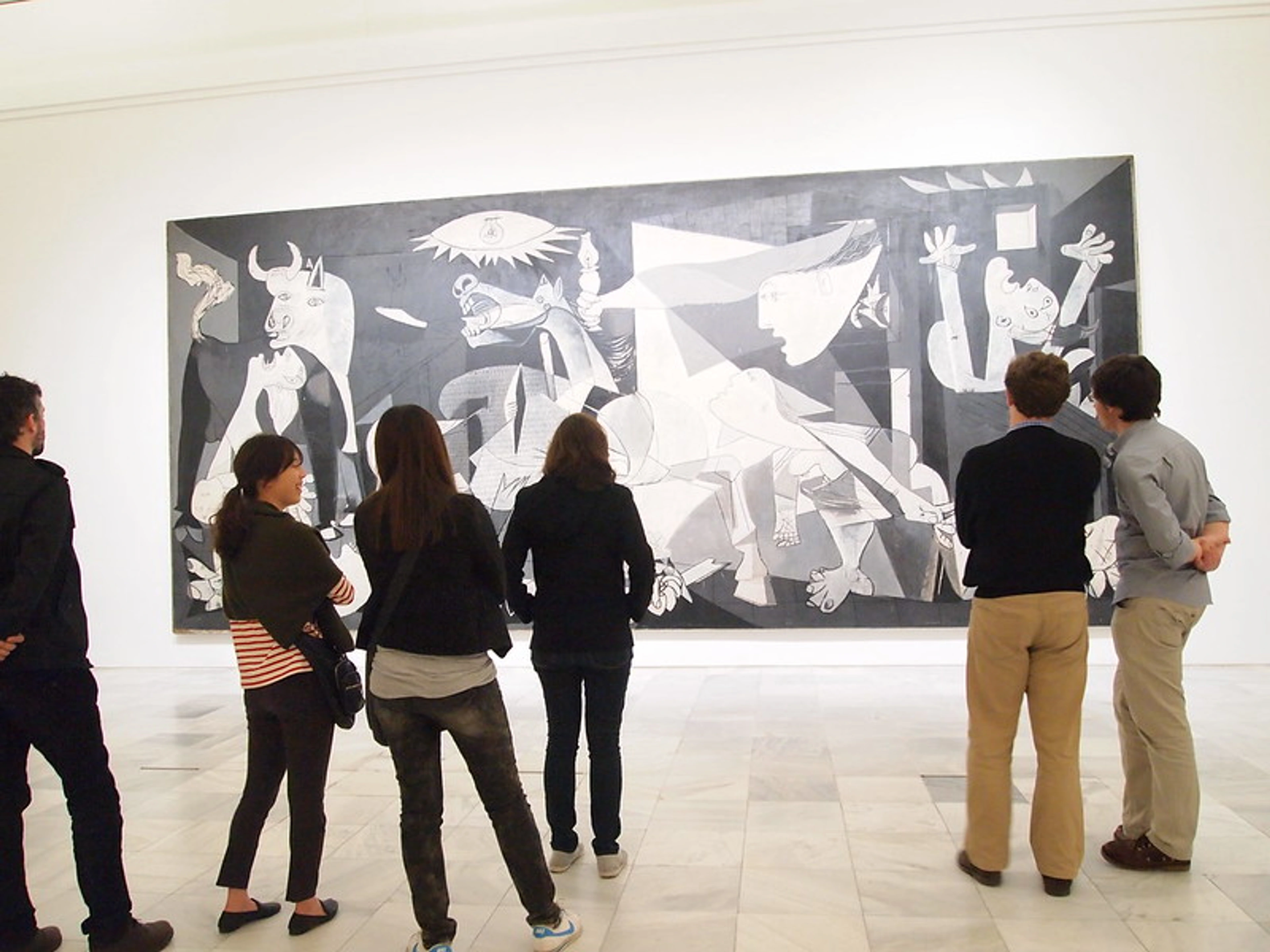
Famous Art Galleries: An Artist's Expanded Guide & Visiting Tips
Step into the world's most famous art galleries through the eyes of an artist. This deeply personal guide explores iconic institutions globally, delves into what makes them famous (collections, architecture, market influence, patronage), offers practical tips for visiting (navigating crowds, studying technique, observing curation, finding hidden gems), and connects the experience directly to your creative process. Discover how these temples of art can challenge and inspire your own journey, from battling the Louvre crowds to finding quiet moments of revelation and applying lessons learned back in your studio. Now expanded with more global insights and practical advice.
Stepping Through the Doors of Fame: An Artist's Guide to Iconic Galleries
Let's be honest, the phrase "famous art gallery" can conjure up images of hushed halls, slightly intimidating crowds, and maybe a vague feeling that you should be more impressed than you are. I get it. Sometimes the sheer scale or reputation can feel overwhelming, like trying to understand astrophysics after only reading horoscopes. It's a common feeling, that little voice whispering, "Am I supposed to feel something profound right now?" I remember feeling exactly that way during my first few visits to major institutions, a bit lost and wondering if I was missing some secret code everyone else seemed to grasp – like standing in front of a massive, revered painting and feeling... nothing, while everyone else seemed to nod knowingly. It made me question if I was even cut out for this art thing. But stick with me, because exploring these temples of art can be genuinely thrilling, even transformative, once you know how to approach them – and especially when you look at them through the lens of your own creative practice. It's like visiting a master's studio, but on a monumental scale, offering lessons you can take right back to your easel.
It's a journey I've taken many times, and each visit, whether to a global giant or a quiet local spot, adds another layer to my own understanding and fuels the art I create. I remember one visit to a smaller regional museum, feeling completely lost among the grand historical pieces, when I stumbled into a small room dedicated to local contemporary artists. The raw energy and unexpected materials in one piece just stopped me in my tracks, a jolt of inspiration that felt more personal and immediate than any famous masterpiece. It's in these moments, away from the main crowds, that I often find the most profound connections, the whispers across time that feel like a direct conversation with another creator. It's like the art is saying, "Hey, I wrestled with this too!" – a surprisingly comforting thought, especially when you're staring down a blank canvas yourself.
It's not just about ticking off a box on a travel itinerary (though, admittedly, there's some satisfaction in saying you've seen the Mona Lisa). Visiting these renowned institutions is about stepping into history, witnessing creative genius firsthand, and maybe, just maybe, feeling that spark of inspiration yourself. It’s like listening to a legendary album live versus hearing it on your phone – the energy is different, palpable. It's a conversation across centuries, and sometimes, I feel like I'm just trying to add my own little sentence to it with the pieces I create and offer. Have you ever felt that connection, that whisper across time? It's a powerful thing, and understanding why these places hold such weight can make the experience even richer.
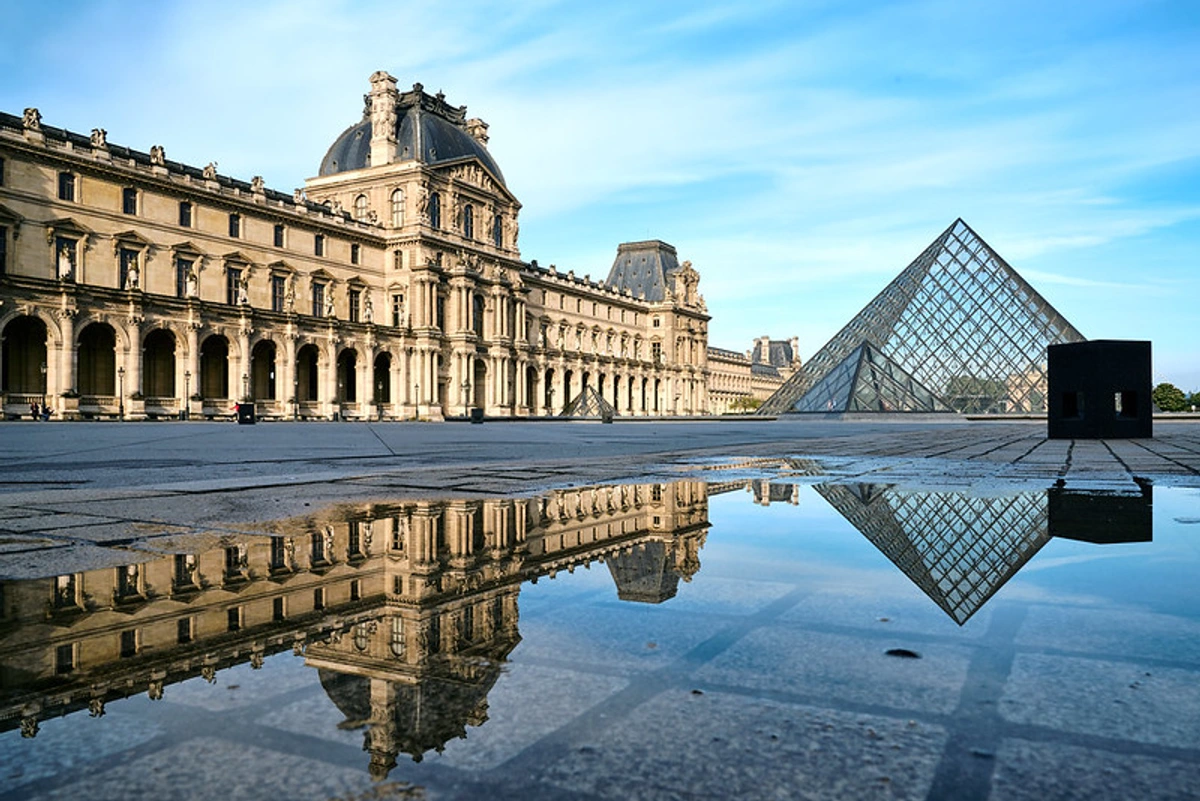
So, What Makes an Art Gallery "Famous" Anyway?
Fame in the art world isn't just about having a catchy name or being mentioned in a movie. It's usually a potent cocktail of factors, and understanding these can make your visit much more meaningful. It helps shift the focus from just 'seeing' to 'understanding' why these places hold such significance. And let's clarify upfront: while the terms "art gallery" and "art museum" are often used interchangeably for large institutions today, traditionally, galleries were more focused on temporary exhibitions and sales, while museums concentrated on permanent collections and conservation. Many places listed on pages like best galleries in the world or best museums function as both. If you're curious about the distinction, my guide "What is an Art Gallery?" dives a bit deeper, touching on the commercial side too. For a working artist, understanding this difference is key – museums are about legacy and public access, while commercial galleries are part of the market ecosystem where art is bought and sold. It's like knowing the difference between a public library and a bookstore; both have books, but their purpose and how you interact with them are fundamentally different.
Here are the key ingredients in that "famous" cocktail:
- The Collection: This is the big one. Does it house masterpieces? What exactly makes a work a masterpiece? It's more than just technical skill; it's about cultural impact, historical significance, and an enduring influence that speaks to generations. Think Leonardo, Michelangelo, Rembrandt, Picasso, Van Gogh, Warhol. The presence of iconic, historically significant works is often the primary driver of fame.It's where you find the pieces that have shaped our understanding of art itself, like the enigmatic smile of the Mona Lisa or the swirling energy of Van Gogh's Starry Night. These aren't just paintings; they're cultural touchstones that can make you pause and think, "How did they do that?" – a question that constantly buzzes in my own studio. Standing before a true masterpiece can feel like a test, like you should feel something profound, but sometimes it's the quiet technical brilliance, a specific brushstroke or color choice, that truly captivates me. It's in analyzing the how that I find the most practical lessons for my own work, like trying to reverse-engineer a magic trick or figure out a complex composition.
- Historical Significance: Was the institution pivotal in art history? Did it champion a particular movement? The building itself might even be a historical landmark. Some galleries are famous because they were the birthplace or hub of a major artistic shift, holding the echoes of past revolutions in art. Walking through these spaces, you can almost feel the weight of history, the moments when art changed direction. It's a powerful reminder that art is a living, evolving thing, built on the foundations of the past. For me, it's a grounding experience, seeing the long lineage of artists who came before, each adding their voice to the chorus. It makes you feel like a small but connected part of something much larger.
- Cultural Impact: Does the gallery shape cultural conversations? Is it a major tourist destination? Institutions like the Louvre or the Met are practically synonymous with their respective cities, drawing millions and influencing global perceptions of art. They become part of the city's identity, cultural landmarks in their own right. Think of how an exhibition like the Met Gala transcends the art world and becomes a global cultural event, or how the acquisition of a controversial piece can spark widespread debate about value and meaning. These institutions aren't just passive repositories; they are active participants in shaping our cultural landscape. Seeing this impact makes me think about the potential reach of art, how a single piece or exhibition can ripple outwards and influence society – a daunting but inspiring thought for any artist hoping their work might one day resonate beyond their studio walls.
- Architecture: Sometimes, the building is as famous as the art inside. Think of the Guggenheim's iconic spiral in New York, Bilbao's shimmering titanium curves, or the Louvre's instantly recognizable glass pyramid entrance. The space itself becomes part of the artistic experience, a work of art housing other works of art. As an artist, I often find myself studying the light, the flow of space, how the architecture influences the way you view the art – it's all part of the composition. The building isn't just a container; it's a collaborator, setting the stage for the art within. It makes me consider how the environment where my own art is displayed affects how it's perceived, whether it's in a gallery or someone's home.
- Sheer Size & Scope: Vast collections covering diverse periods and cultures naturally draw more attention and offer a broader educational experience. You could spend days in some of these places and still only scratch the surface. It can be overwhelming, yes, but also offers endless opportunities for discovery. It's like a giant library of visual ideas, waiting to be explored. For an artist, this sheer volume can be both paralyzing and exhilarating – so much to see, so much to learn, so many different paths creativity has taken. It's a reminder that there's always more to explore, more visual languages to learn.
- Temporary Exhibitions & Biennials: Major galleries often host blockbuster temporary exhibitions or are key venues for international biennials. These events draw huge crowds, generate buzz, and bring unique, often cutting-edge, art experiences that you can't find in the permanent collection. Checking the temporary exhibition schedule is absolutely crucial when planning a visit – sometimes that's the main draw! I've planned entire trips around a single temporary show, and it's always worth it. It's where you see the art world actively evolving, experimenting, and pushing boundaries – a vital source of inspiration for any practicing artist. It's also where you might see emerging artists getting their first major institutional exposure, offering a glimpse into potential future directions for art. It's like seeing the art world's R&D department in action.
- Curators and Directors: Behind the scenes, the vision and expertise of curators and directors play a massive role in a gallery's fame and influence. They shape the collection through acquisitions, organize exhibitions that define movements or introduce new artists, and interpret the art for the public. Their choices determine what stories are told and which artists gain prominence. Understanding their role helps demystify the art world ecosystem and highlights the human element behind these vast institutions. If you're curious about what curators really do, check out my guide on the "Role of Art Curator". For an artist, knowing how curators think is like getting a peek behind the curtain – it helps understand how art is selected, contextualized, and presented to the world. It's a reminder that getting your work seen involves understanding the gatekeepers.
- Influence on the Art Market: Famous galleries and museums aren't just cultural beacons; they are significant players in the art market ecosystem. Their acquisitions can validate artists and movements, influencing value and collectibility. Exhibitions can boost an artist's profile dramatically. Understanding this dynamic is crucial for artists navigating the commercial side of the art world. It's a complex relationship, and seeing how institutions interact with the market can offer insights into the business of art. It's a reminder that while art is about expression, it also exists within an economic reality. For an artist, knowing which institutions collect certain types of work or exhibit emerging talent can inform where they might aspire to show or who they might want to connect with. It's part of the strategy, like understanding your audience.
- Patronage and Funding: Who pays the bills? The history of art is deeply intertwined with patronage, from Renaissance popes and wealthy merchants to modern governments, corporations, and private donors. The funding sources of a major institution can significantly shape its collection, exhibition program, and even its public image. Understanding who supports these galleries offers insights into the power structures within the art world and how artists and movements gain visibility and support.It makes you think about the whole ecosystem – who gets to decide what art is seen and valued, and how does an artist navigate that? It's a reminder that art doesn't exist in a vacuum; it's part of a larger economic and social system. It also makes you appreciate the patrons who support artists and institutions today, as they are essential for keeping the lights on and the art flowing. For an artist, understanding patronage, whether historical or contemporary, can offer insights into how art gets made, collected, and preserved, and perhaps even inspire thoughts on seeking grants, understanding collector motivations, or aligning their work with institutional missions to advance their own career strategy. It's about seeing the bigger picture of how art moves through the world.
Beyond the Blockbusters: The Joy of Discovery for Artists
While the icons are famous for a reason, don't forget the countless other incredible galleries worldwide. Sometimes the most rewarding experiences happen in smaller, less crowded spaces where you can stumble upon emerging artists or connect more intimately with the art. Exploring local galleries, university museums, or artist-run spaces can be just as enriching, if not more so, for a practicing artist. It's like finding a hidden gem of a cafe compared to the bustling tourist trap – the experience is just different, often more personal.
Why are these smaller spaces so valuable? They are often the places where you find the art of today being made and shown, the artists who might be the 'masters' of tomorrow. The energy is different – less about historical reverence and more about current ideas, experimentation, and raw creativity. You might see works in progress, meet the artists themselves, or get a sense of the local art scene's pulse. It's in these spaces that the art feels less like history and more like a living, breathing thing, much like the art I strive to create. Visiting a smaller, independent gallery often feels more personal, like you're part of a community, and seeing the raw energy of emerging artists always makes me think about my own early days and the constant process of finding my voice /timeline. Plus, you might find unique pieces you can actually buy art for less! These visits are less about ticking off famous names and more about finding genuine connection and unexpected inspiration. You might encounter experimental forms like video art, immersive installations, or even performance art that challenges your definition of what art can be, pushing your own creative boundaries. It's where the rules are being bent, broken, or invented, which is always exciting for an artist.
Beyond traditional galleries, consider seeking out specific types of alternative art spaces. Artist-run initiatives and co-op galleries are often hubs of raw experimentation, offering direct access to artists and their latest work, free from the pressures of the commercial market or institutional bureaucracy. They're like the garage bands of the art world – raw, energetic, and full of potential. Non-profit exhibition spaces frequently champion underrepresented artists or explore challenging themes, providing vital platforms for critical dialogue and social commentary. Visiting artist studios open to the public (during events like open studio weekends) offers a unique glimpse into the creative environment and process itself – seeing the tools, the mess, the works in progress can be incredibly grounding and inspiring. It's like seeing behind the magic trick! And don't overlook residency exhibition spaces, where artists who have spent time creating in a specific location showcase the work produced during their stay, often reflecting unique local influences or intensive periods of focus. These spaces offer a different kind of engagement, a chance to see art being made and discussed in a more intimate, community-focused setting. They remind me that the art world is vast and varied, extending far beyond the grand marble halls.
And hey, if your artistic interests lean towards specific mediums, remember that not all famous institutions focus solely on painting and sculpture. Exploring major photography museums (like the International Center of Photography in NYC or Foam in Amsterdam) or renowned design museums (like the V&A in London or the Design Museum in Kensington) can offer entirely different, yet equally valuable, sources of inspiration, showcasing how creativity manifests across diverse visual disciplines, from graphic design to industrial objects. It's all part of the visual conversation, and seeing how design principles apply across different fields can spark unexpected ideas for your own work. You might also seek out institutions dedicated to specific crafts like textile art, ceramics, or folk art, which offer deep dives into material mastery, cultural traditions, and often vibrant, narrative-driven work that can be incredibly inspiring, especially if you work in or are curious about non-traditional mediums. Have you ever considered the stories woven into a tapestry or the history held within a ceramic vessel? These specialized collections are treasure troves of technique and meaning.
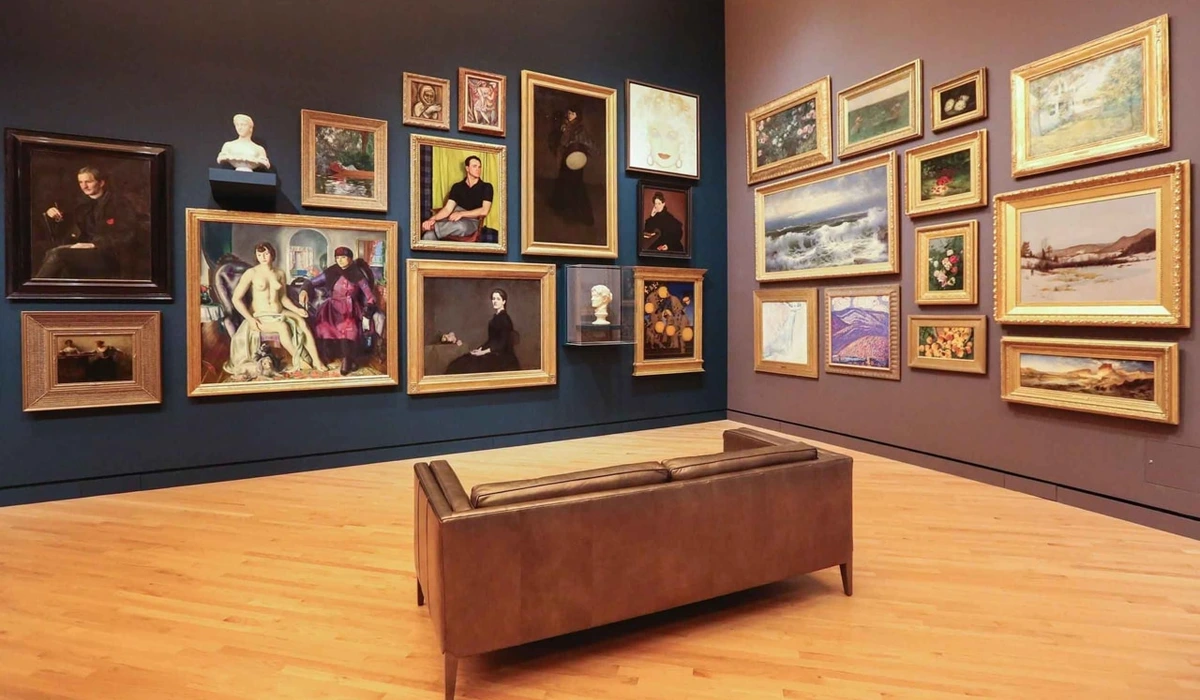
A Whirlwind Tour: Icons You Should Know (Through an Artist's Eyes)
Okay, let's strap in for a quick journey through some undisputed heavyweights. This isn't exhaustive (we'd be here all week!), but it covers some pillars of the art world across different continents. Think of this as a starting point, a taste of the global art feast. Moving from the foundational giants to the dynamic global scene, you start to see how art is a truly universal language, spoken in countless accents. Each offers unique lessons for the observant artist, like studying different dialects of creativity.
Europe: The Old Guard and Modern Marvels
Europe boasts an incredible density of world-renowned galleries, often blending deep history with cutting-edge art. Walking these halls, you can feel the weight of centuries and witness the evolution of artistic thought firsthand. It's a continent where the foundations of Western art were laid, offering invaluable lessons in technique, composition, and narrative. It's like visiting the birthplace of many of the ideas that still influence art today, a chance to see the roots of the tree.
- The Louvre Museum (Paris, France): You can't talk famous galleries without mentioning the Louvre. Home to the Mona Lisa, Venus de Milo, and Winged Victory of Samothrace, its collection spans millennia. It's vast, overwhelming, and utterly essential. Prepare for crowds (seriously, navigating the Mona Lisa scrum is an art form in itself, a bizarre performance piece!), but also prepare to be awestruck. The building itself, a former royal palace, is a masterpiece. I remember getting lost in its endless corridors, stumbling upon unexpected treasures far from the main attractions – sometimes those quiet moments with a lesser-known piece are the most profound, sparking ideas about composition or colour that I carry back to my studio. Seeing the sheer scale of works like Veronese's The Wedding Feast of Cana makes you marvel at the ambition of artists throughout history and the logistical challenges of creating such monumental pieces. It makes my own large canvases feel... manageable. Look closely at the drapery in classical sculptures like the Venus de Milo – the way stone is made to look like flowing fabric is a masterclass in form and texture that can inspire how you handle materials in your own work. Check out our guide to the "Best Galleries in Paris" for more.
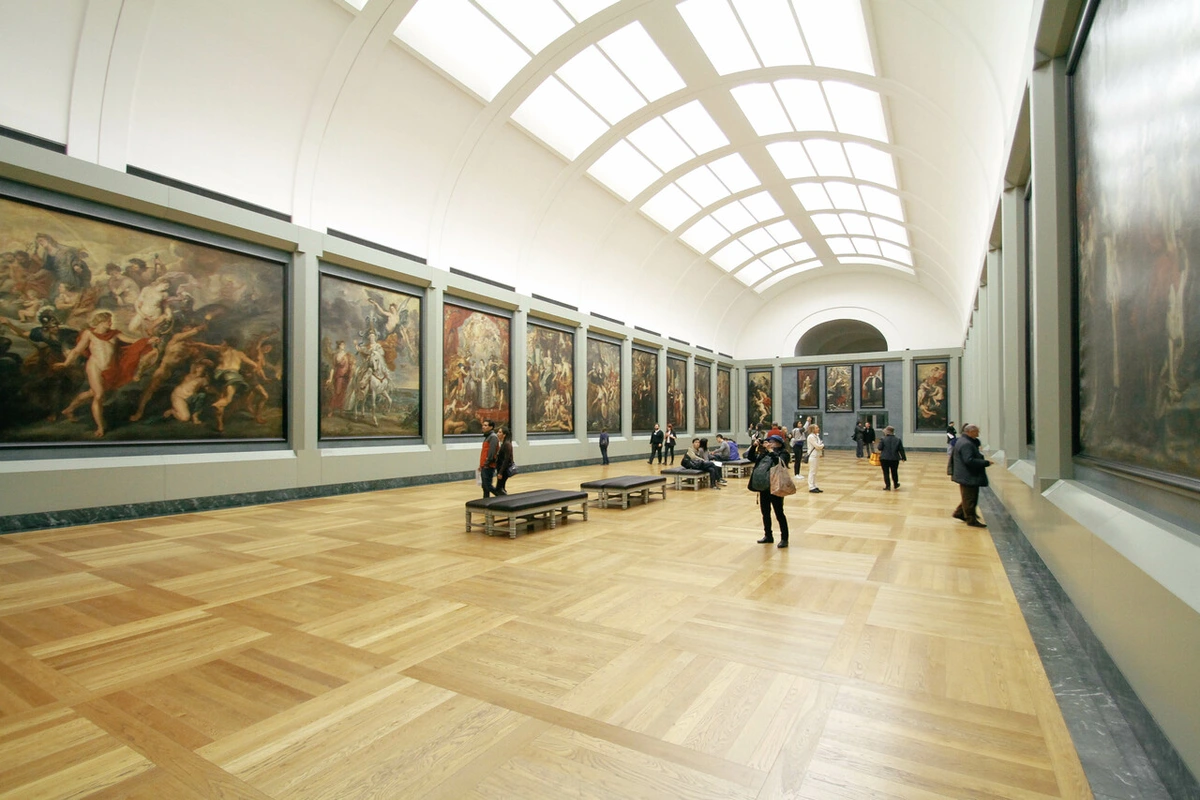
- Tate Modern (London, UK): Housed in a former power station, Tate Modern is a global powerhouse for modern art and contemporary art. Its Turbine Hall alone hosts incredible large-scale installations that challenge your perception of space and art. It feels dynamic, challenging, and very much alive – a stark contrast to the hushed historical halls elsewhere. It's a place that always sparks new ideas for me; seeing how contemporary artists push boundaries makes me question my own limits in the studio. Works like Mark Rothko's Seagram Murals or Damien Hirst's The Physical Impossibility of Death in the Mind of Someone Living demand a different kind of engagement than historical pieces, forcing you to confront scale, concept, and material in new ways. It's also a great place to see video art and performance art integrated into exhibitions, showing how artists are using new mediums. Standing in front of a massive Rothko, you feel the sheer presence of color and scale – a lesson in how environment and size impact the viewer's emotional response, something I think about when considering the scale of my own abstract pieces. See more London spots in our "Best Galleries in London" guide.
- Prado Museum (Madrid, Spain): The heart of Spanish art, the Prado holds masterpieces by Velázquez, Goya, and El Greco. It's a deep dive into Spanish history and culture through the eyes of its greatest painters. Seeing Velázquez's Las Meninas in person is a masterclass in composition and perspective, something I constantly analyze in my own work. The way he plays with space, reflection, and the viewer's position is mind-bending and offers endless lessons in visual complexity. But it's the raw, unsettling intensity of Goya's Black Paintings that really stays with you – they feel incredibly modern in their emotional depth, a reminder that art can be profoundly disturbing and beautiful at the same time. The building itself is a grand neoclassical structure. Don't miss El Greco's elongated figures and dramatic lighting, which offer a completely different approach to form and emotion, demonstrating how artists can distort reality to convey feeling. It makes you think about how much emotion can be packed into a single brushstroke or a distorted form, a powerful lesson for any artist exploring expression.
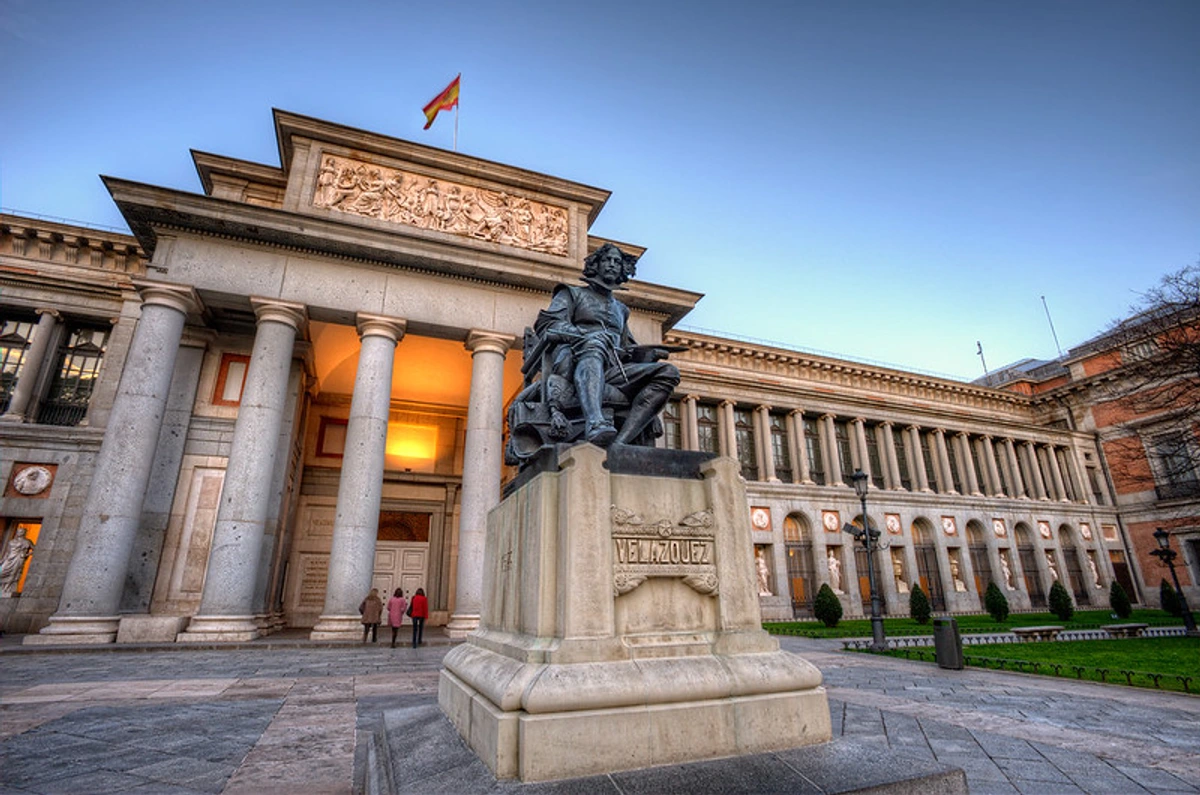
- Uffizi Gallery (Florence, Italy): If the Renaissance makes your heart beat faster, the Uffizi is your pilgrimage site. Botticelli's Birth of Venus and Primavera reside here, alongside works by Leonardo da Vinci and Michelangelo. Housed in a stunning Renaissance palace, the building is integral to the experience. Standing before Botticelli's works feels like stepping back in time to the dawn of a new artistic era; the delicate lines and ethereal figures are a masterclass in form and narrative that I often contemplate when sketching or planning a figurative piece. Seeing the evolution from early Renaissance masters like Giotto to the High Renaissance giants is a powerful lesson in artistic progress, showing how techniques like perspective and chiaroscuro (the use of strong contrasts between light and dark, often used to create volume) developed and were mastered over time. It's a reminder that even the masters built on the work of those who came before, a comforting thought when you're struggling in the studio. Explore more Florentine gems in our "Best Galleries in Florence" guide.
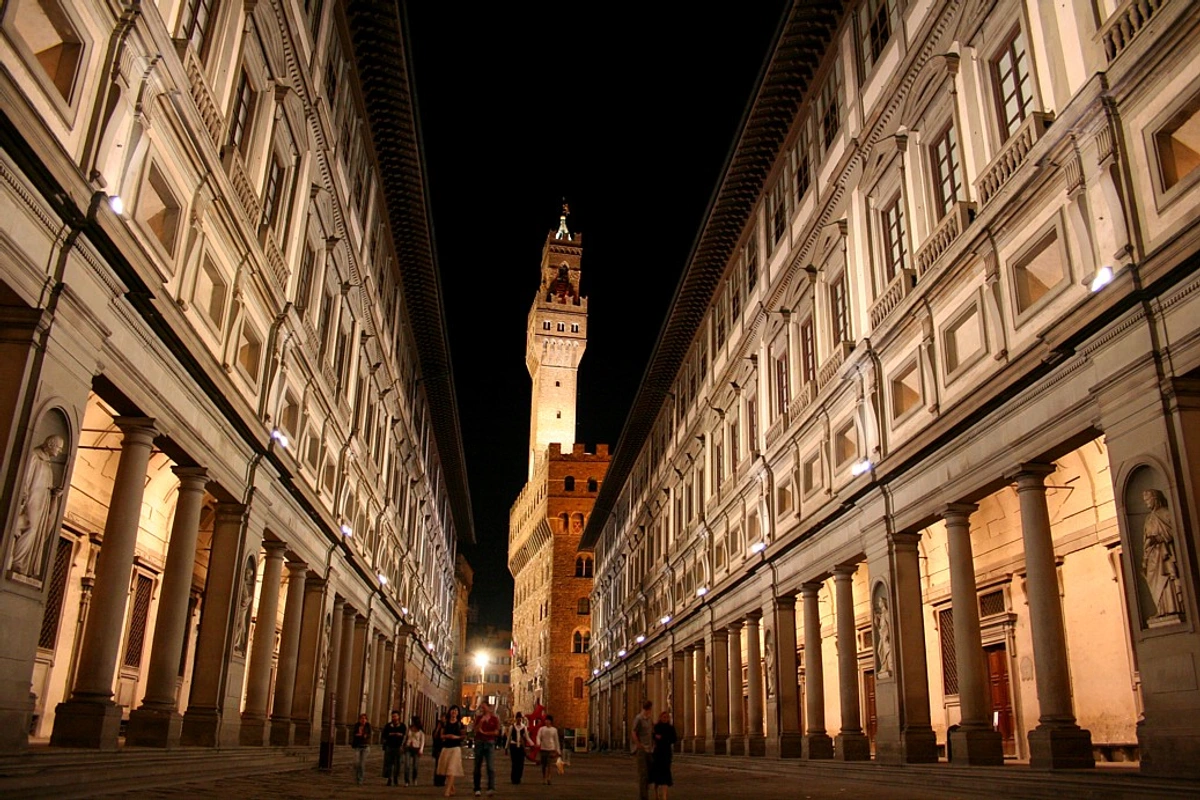
- Rijksmuseum (Amsterdam, Netherlands): Home to Rembrandt's The Night Watch and Vermeer's The Milkmaid, the Rijksmuseum is the crown jewel of Dutch art and history. It offers a stunning journey through the Dutch Golden Age within a magnificent Gothic Revival building. The scale and detail of The Night Watch are truly breathtaking in person; the way Rembrandt handles light and shadow (chiaroscuro again!) and creates such dynamic movement in a group portrait is something I constantly study, trying to understand his technique and the sheer audacity of such a composition. Vermeer's quiet, luminous scenes, like The Milkmaid, are a masterclass in capturing light and everyday moments with profound beauty, showing the power of subtle observation and controlled brushwork. It makes you realize the magic that can be found in the mundane, and how light itself can be a subject. For more Dutch art spots, see our "Best Art City in the Netherlands" guide. It's not too far from my own little art haven at the /den-bosch-museum, if you're ever in the area!
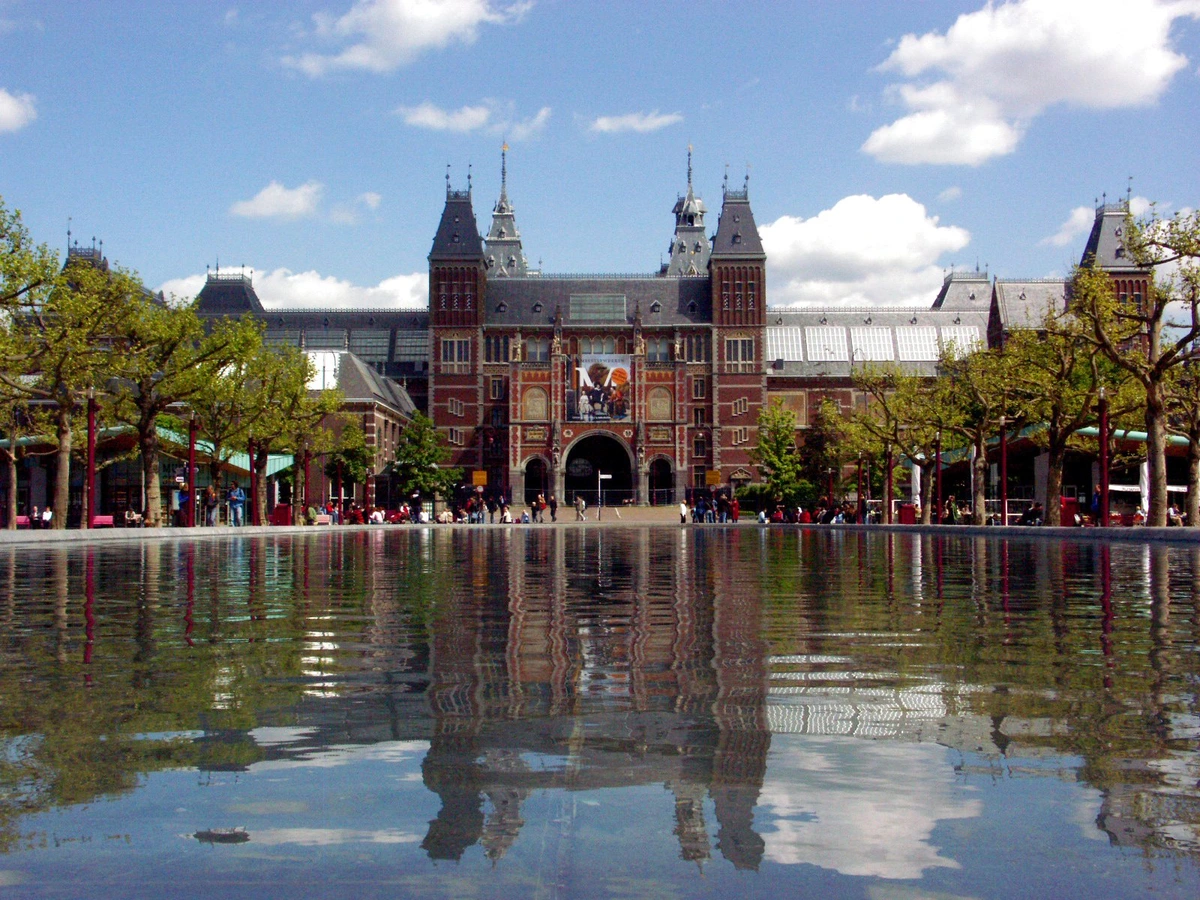
- Vatican Museums (Vatican City): An immense complex showcasing treasures amassed by popes over centuries. The undeniable highlight is Michelangelo's Sistine Chapel ceiling, a sight that genuinely lives up to the hype. The sheer scale and opulence are staggering, a testament to human ambition and faith. Remember to look up! The way Michelangelo created such dynamic figures on a curved surface is mind-boggling and makes me appreciate the physical challenges artists have always faced, especially when working on monumental projects. Beyond the Sistine Chapel, the Raphael Rooms offer stunning frescoes, and the collection of ancient sculpture is immense. It's a place where art and history are inextricably linked, offering lessons in narrative, form, and the enduring power of religious and political patronage. It's a lot to take in, and sometimes you just have to find a quiet corner and process the sheer moreness of it all. Looking at the frescoes, you can learn so much about storytelling through imagery and the logistics of creating art on an architectural scale.
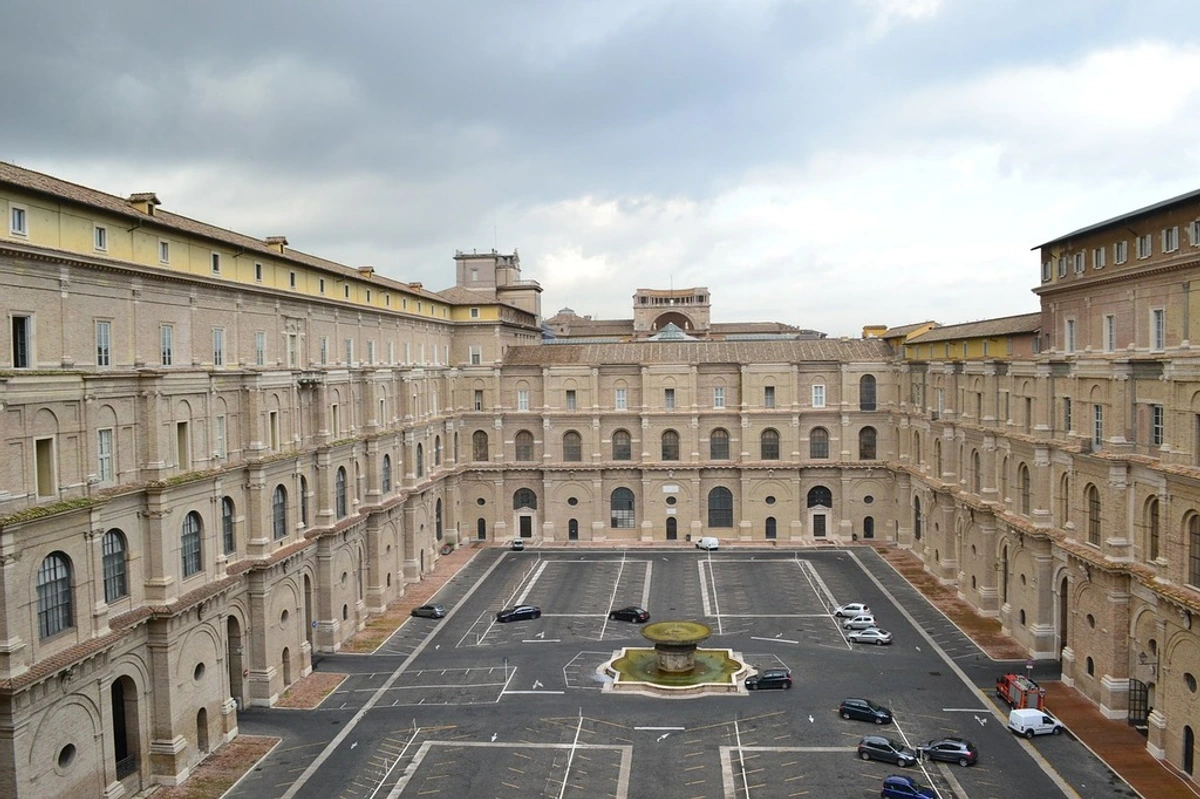
- Centre Pompidou (Paris, France): Famous for its "inside-out" architecture, the Pompidou houses Europe's largest museum for modern art and is a vibrant cultural hub. It's a must-visit for lovers of 20th and 21st-century art, offering a completely different experience than the Louvre. The views from the top aren't bad either! Walking through the Pompidou feels like exploring a giant, colourful machine, and the art inside often mirrors that energy – it's a place that encourages you not to take art too seriously, which is a refreshing change. Look for key works by Matisse, Picasso, Kandinsky, and the Surrealists. It's a place to see how artists broke from tradition and experimented with new forms, materials, and ideas, offering valuable lessons in artistic rebellion and innovation. It reminds me that rules are often meant to be broken, or at least bent, and that experimentation is key to finding your own voice. Seeing how artists like Kandinsky translated emotion into abstract form is incredibly inspiring for anyone working in abstraction. See more in our guide to "Best Galleries for Modern Art)".
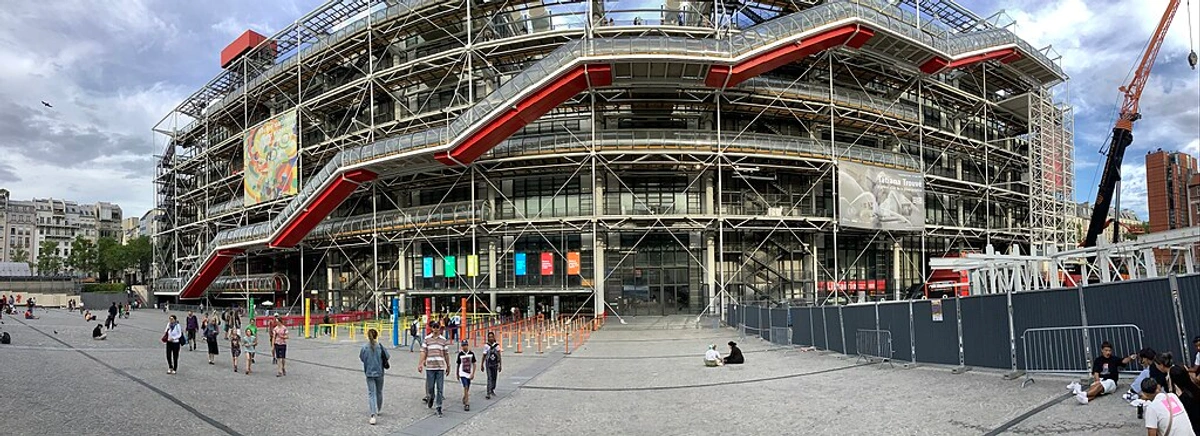
This is just scratching the surface of "Best Galleries in Europe". Other notable mentions include the National Gallery (London) with its incredible collection of European paintings (don't miss the Impressionists! Seeing their brushwork up close is a revelation in capturing light and movement), the Museo Reina Sofía (Madrid), home to Picasso's Guernica and a strong collection of 20th-century Spanish art (a powerful lesson in using art for social commentary and conveying intense emotion through form), the Hermitage Museum (St. Petersburg), a vast palace complex with millions of items (offering a dizzying array of styles and periods to study), and the Kunsthistorisches Museum (Vienna), known for Old Masters and decorative arts (showing how art and craft intersect). Each offers unique insights into different periods, movements, and national artistic identities. It's like a continent-sized buffet of artistic history, each dish offering a different flavour of creativity.
Across the Pond: American Icons
Leaving the historical depth of Europe, we cross the Atlantic to explore the dynamic scene in the Americas. The US boasts world-class institutions, often with strong collections of modern and contemporary art alongside historical treasures. They offer a different perspective, often reflecting a younger nation's artistic journey and a dynamic contemporary scene. These galleries are fantastic places to study the evolution of American art and its dialogue with global movements. It's a different energy, less about ancient foundations and more about rapid innovation and cultural melting pots, a reflection of the country itself.
- The Metropolitan Museum of Art (New York City, USA): The Met is encyclopedic, covering virtually every period and culture. It's a city within a city, and you could spend days exploring. Its grand facade on Fifth Avenue is instantly recognizable. I always feel a sense of adventure walking through its diverse wings, from Egyptian temples to European masters. The sheer breadth of human creativity under one roof is astounding. And don't miss the rooftop garden in warmer months – art with a view! The Temple of Dendur wing, in particular, always gives me a feeling of profound awe, transporting me across millennia and making me think about the enduring power of monumental art and architecture. Look for iconic works like Emanuel Leutze's Washington Crossing the Delaware or the Impressionist galleries, and consider how the museum's vast scope reflects a global perspective on art history. It's a place where you can get lost in time and space, in the best possible way, and see how different cultures have approached form, colour, and narrative throughout history. NYC has an incredible density of galleries; see our "Best Galleries in New York" guide.
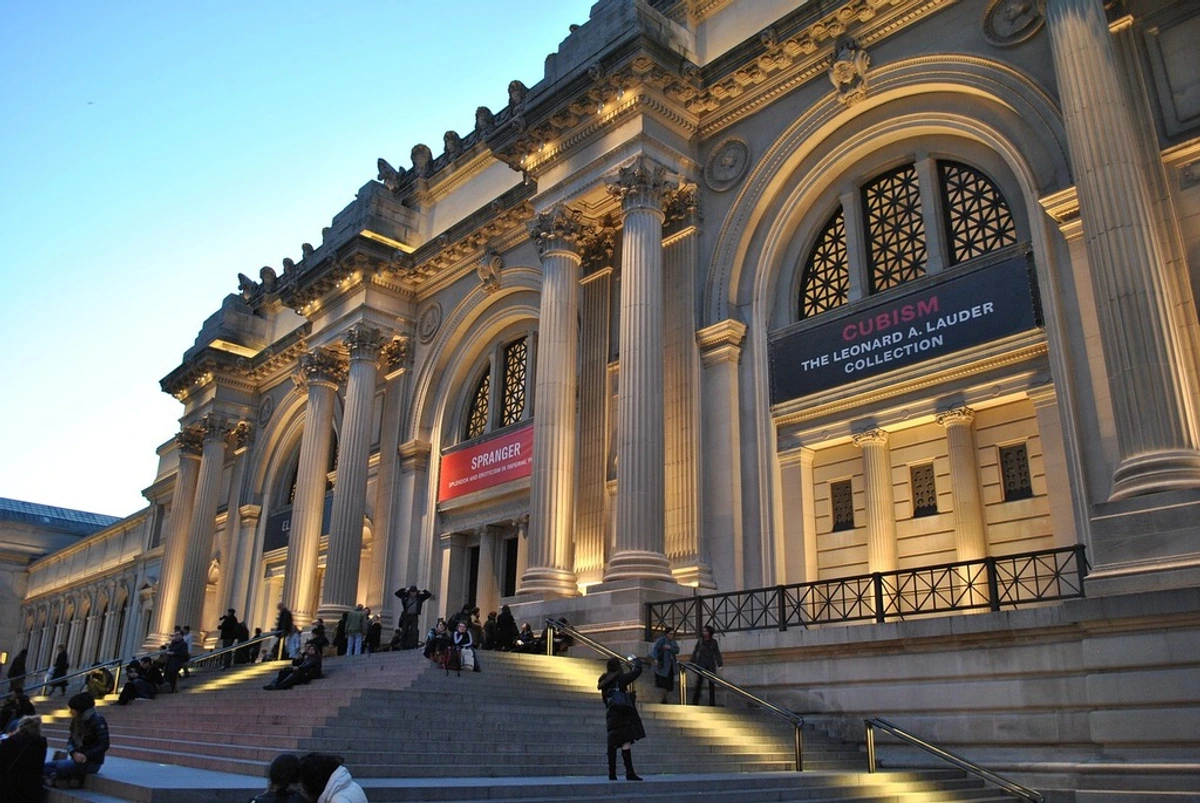
- Museum of Modern Art (MoMA) (New York City, USA): MoMA is arguably the world's most influential museum dedicated to modern art. Van Gogh's Starry Night, Picasso's Les Demoiselles d'Avignon, Warhol's Campbell's Soup Cans – the list goes on. It's a cornerstone for understanding the evolution of modern art. Standing in front of Starry Night is a surprisingly emotional experience; the texture and color are so much more vibrant in person, making me think about how artists translate emotion into visible form through technique and brushwork. MoMA's collection is a crash course in 20th-century artistic revolutions, from Cubism to Abstract Expressionism and Pop Art, offering endless examples of artists breaking rules and inventing new visual languages. It's a place that constantly challenges my own assumptions about what art can be and inspires me to experiment with my own style. Seeing Picasso's groundbreaking approach to form or Warhol's use of repetition and commercial imagery offers direct lessons in challenging conventions. See more about "Famous Modern Art)" here.
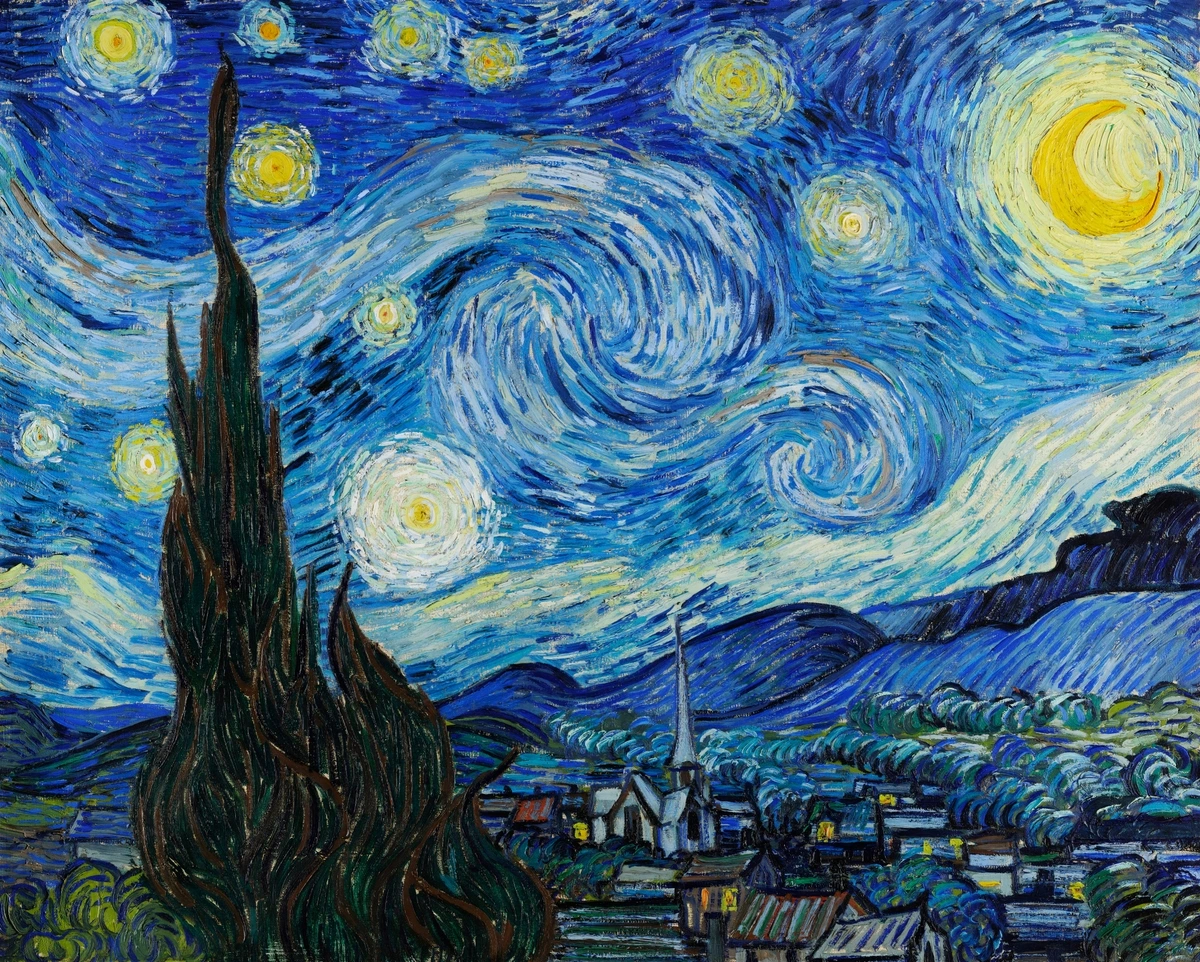
- National Gallery of Art (Washington, D.C., USA): Offering free admission, the National Gallery provides a superb overview of Western art history, including the only Leonardo da Vinci painting in the Americas (Ginevra de' Benci). Its two buildings offer distinct architectural styles and collections. It's a wonderfully accessible way to see incredible art, and the East Building, designed by I.M. Pei, is a work of art in itself, housing modern and contemporary collections. The Sculpture Garden is also a highlight, offering a different way to experience form and space outdoors. It's a place where you can trace the lineage of Western art, seeing how styles and techniques evolved from the Renaissance to the present day. It feels both grand and approachable, a rare combination. Looking at the Old Masters here, you can study foundational techniques in portraiture, landscape, and still life, while the modern wing offers insights into abstraction and new forms. Find more D.C. galleries in our "Best Galleries in DC" guide.
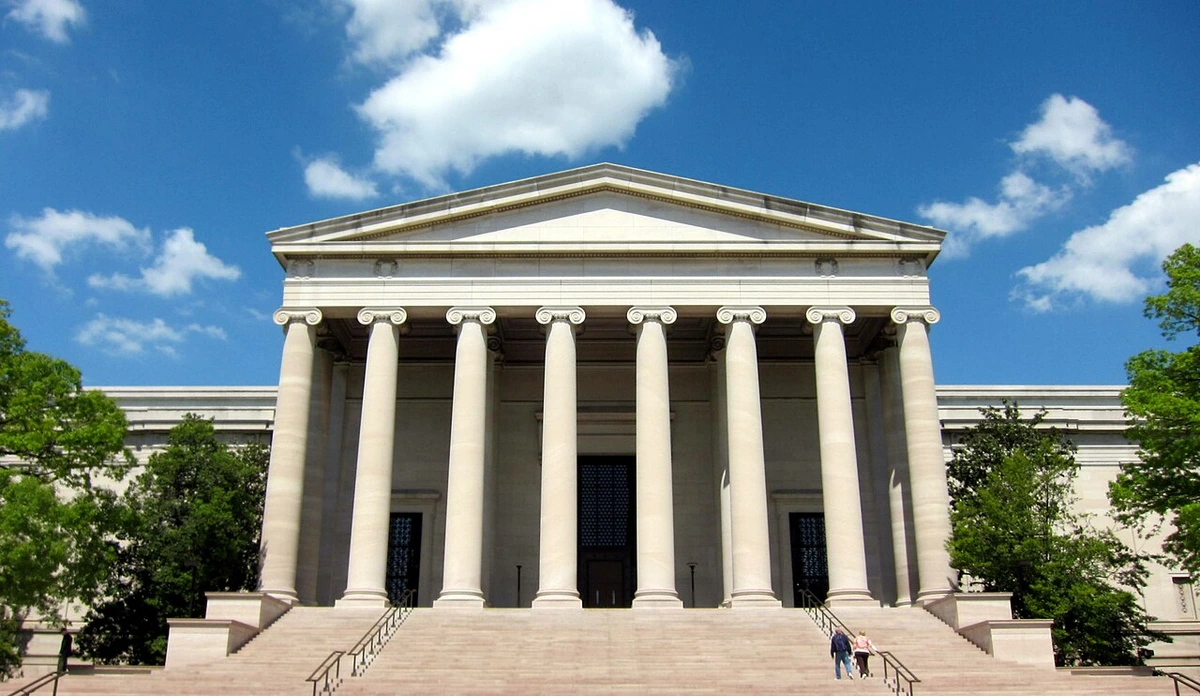
- Los Angeles County Museum of Art (LACMA) & The Getty Center (Los Angeles, USA): LA has a thriving art scene. LACMA is the largest art museum in the western US, known for its diverse collection spanning global art history and its iconic outdoor installations like Urban Light by Chris Burden. The Getty offers stunning architecture, gardens, and views alongside its impressive collection of European paintings, sculpture, and decorative arts. Visiting the Getty feels like a retreat, a beautiful space to contemplate art and the city below. The way the natural light interacts with the architecture and the art is something I always notice, thinking about how light shapes perception in my own paintings. LACMA's breadth, from ancient artifacts to contemporary works, reflects the diverse cultural landscape of LA and offers insights into how art can engage with public space. It's a reminder that art isn't confined to indoor spaces and can be a dynamic part of the urban environment. Studying the Getty's collection of European decorative arts can also offer unexpected inspiration for pattern, form, and material combinations. Check out our "Best Galleries in LA" guide.
Discover more top spots across the country in our "Best Galleries in the US" overview.
Exploring Art Across the Globe: Key Institutions Beyond Europe and North America
The art world is truly global, with incredible institutions found on every continent. While the European and North American giants often dominate the conversation, exploring galleries elsewhere offers unique perspectives and collections that are just as vital to the global art story. Stepping into these spaces is like discovering entirely new dialects of that universal art language, revealing different histories, materials, and cultural contexts that can profoundly broaden an artist's perspective. It's a necessary journey to understand the full tapestry of human creativity, and frankly, it's just fascinating. Have you ever wondered what artistic conversations are happening on the other side of the world?
Asia: Ancient Treasures and Contemporary Vibrancy
Beyond the traditional centers, Asia offers a fascinating blend of ancient traditions and contemporary innovation. Asia's art scene is incredibly dynamic, blending millennia of tradition with cutting-edge contemporary expression. It's a continent where ancient history meets the future of art, offering a rich tapestry of artistic approaches. Visiting these institutions provides invaluable insights into non-Western artistic philosophies, techniques, and cultural narratives. It's a chance to see art through a different lens, one that might challenge your assumptions about what art is or can be.
- Tokyo National Museum (Tokyo, Japan): Japan's largest museum, housing a vast collection of art and artifacts from Japan and other Asian countries. It's essential for understanding the rich history of Asian art, from ancient ceramics to samurai swords. The delicate beauty and meticulous craftsmanship of traditional Japanese art always make me slow down and appreciate the power of precision – a valuable lesson for any artist, especially in a world that sometimes feels obsessed with speed. Seeing the incredible detail in historical Japanese woodblock prints or the serene beauty of ink paintings makes me reflect on the power of line and negative space in my own work, and the deep connection between art and nature in Japanese aesthetics. It's a different kind of mastery than Western art, equally profound, and can offer fresh perspectives on composition and mark-making. I remember seeing a collection of Edo period screens here, and the way the artists used negative space to suggest vast landscapes with just a few brushstrokes was absolutely mind-blowing – a powerful reminder that sometimes less is truly more. See more in our guide to the "Best Galleries in Japan".
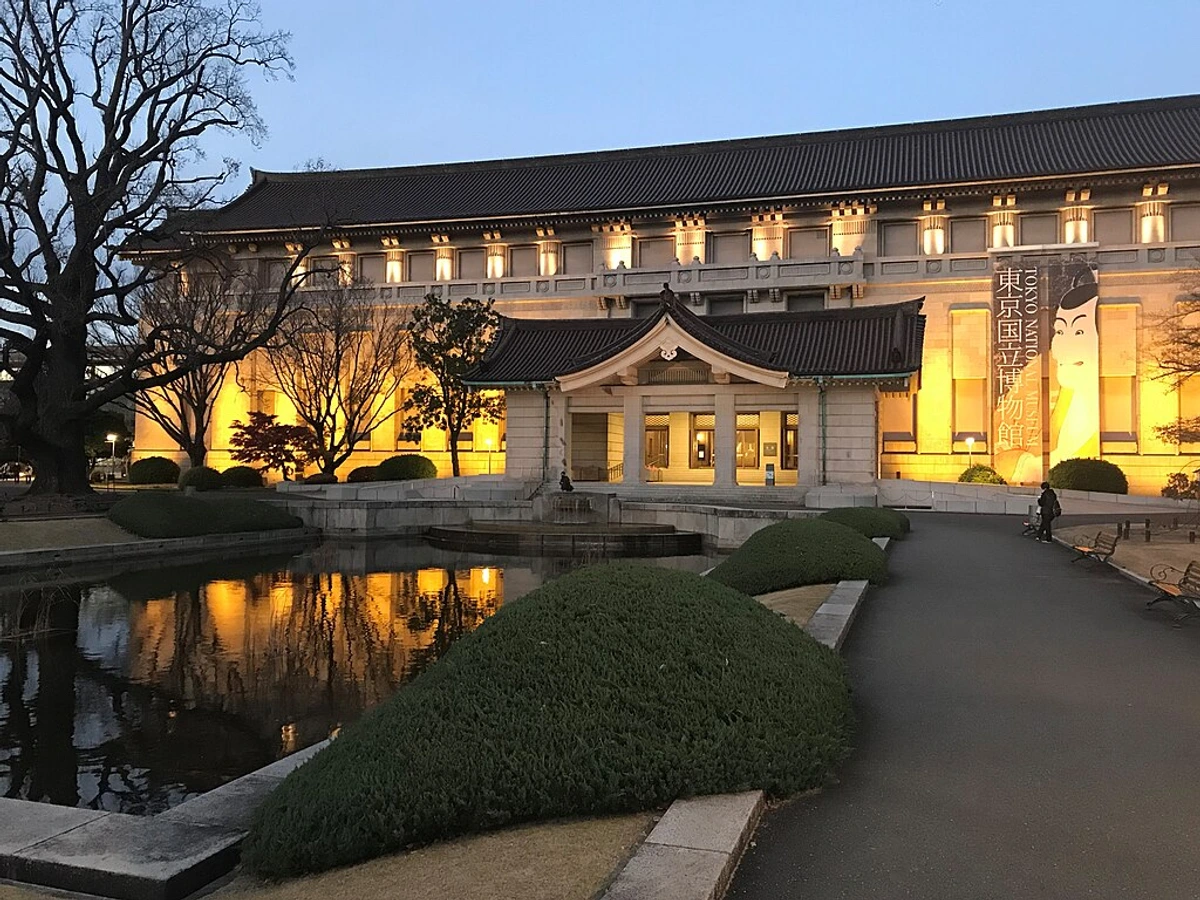
- National Museum of China (Beijing, China): One of the largest museums in the world, covering Chinese history and art from the Yuanmou Man to the Qing dynasty. A monumental institution reflecting a monumental history, offering insights into one of the world's oldest continuous artistic traditions. The sheer scale of history contained within its walls is humbling, showcasing everything from ancient bronzes to classical ink paintings. The mastery of brushwork in traditional Chinese painting is something I could study for hours, thinking about the control and spontaneity required to create such expressive lines with ink. It's a profound reminder of the longevity and depth of artistic practice and offers lessons in economy of line and expressive mark-making. See more in our guide to "Contemporary Art in China".
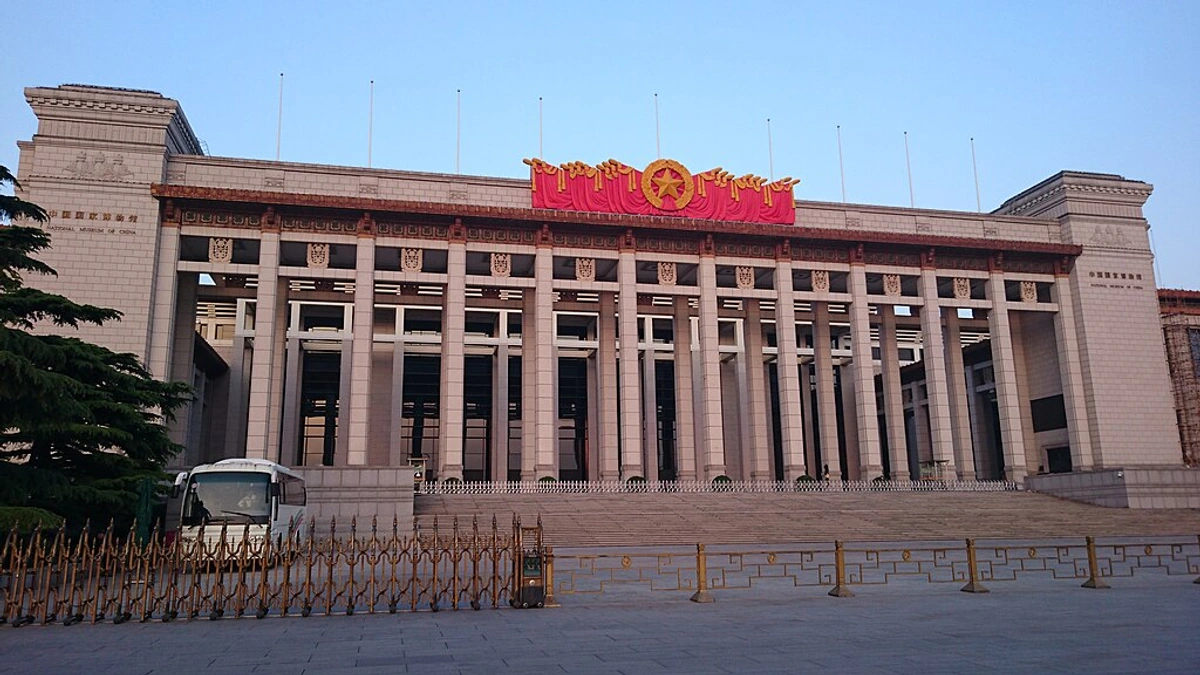
- National Gallery Singapore (Singapore): Housed in two beautifully restored national monuments, this gallery focuses on Singaporean and Southeast Asian art, offering crucial regional context often missed in Western surveys. It's a fantastic place to discover artists and movements unique to this vibrant part of the world, showcasing a blend of tradition and contemporary energy that feels incredibly relevant today. The architecture itself is stunning, blending colonial history with modern design. Exploring the diverse narratives and materials used by Southeast Asian artists opens up new ways of thinking about cultural identity and artistic expression, and how local histories intersect with global trends. It's a vital reminder that contemporary art isn't just a Western phenomenon and that powerful artistic dialogues are happening everywhere. See how artists here use materials and forms influenced by their unique environment and history – it might just inspire you to look at your own surroundings differently. Explore more in our guide to the "Best Galleries in Asia".
- National Museum of Modern Art, Kyoto (Japan): Known as MoMAK, this museum offers a deep dive into Japanese modern art from the Meiji period onwards, including painting, sculpture, crafts, and photography. It's a great place to see how traditional Japanese aesthetics evolved and interacted with Western influences, providing a unique perspective on modernism. Seeing how artists navigated this cultural dialogue is fascinating and makes me consider the influences on my own work, and how different artistic traditions can inform and enrich each other. It's a lesson in synthesis and adaptation, showing how artists can draw from multiple sources to create something new. See more in our guide to "Contemporary Art in Japan".
- Ullens Center for Contemporary Art (Beijing, China): A leading independent art center dedicated to contemporary art in China and beyond. Visiting UCCA gives you a pulse on the current art scene, often featuring experimental and thought-provoking exhibitions that challenge perceptions and push boundaries – exactly the kind of energy that fuels my own creative process. It's a space where you can see artists directly engaging with the complexities of the modern world, using diverse mediums from painting and sculpture to video and installation art. It's a glimpse into the future of art and a reminder that contemporary art is a global conversation, not confined to a few major cities.
Africa: Ancient Legacies and Contemporary Voices
Moving south, Africa's artistic heritage is incredibly deep and diverse, spanning millennia of history and countless cultures. Today, its contemporary art scene is booming, offering vital perspectives often underrepresented in global art narratives. These institutions are essential for understanding the continent's rich artistic past and dynamic present, showcasing everything from ancient artifacts to cutting-edge contemporary installations. Studying African art, both historical and contemporary, offers profound lessons in symbolism, material innovation, and the power of art as a cultural and social force. It's a continent where art is deeply woven into the fabric of life, often serving community or spiritual purposes, which is a powerful contrast to the often individualistic focus of Western art.
- Egyptian Museum (Cairo, Egypt): While perhaps more focused on archaeology, its collection of ancient Egyptian artifacts, including the treasures of Tutankhamun, is unparalleled and represents an artistic legacy stretching back thousands of years. It's a direct link to the art of one of the earliest great civilizations, and seeing objects crafted with such skill and symbolic power millennia ago is truly awe-inspiring. It makes you think about the enduring human need to create and leave a mark, and the incredible craftsmanship achieved with ancient tools. The precision and symbolism in ancient Egyptian sculpture and hieroglyphs are a masterclass in visual communication that still feels potent today, demonstrating how art can serve profound cultural and spiritual purposes. It's a humbling experience that puts your own artistic struggles into a vast historical context. Imagine the hands that carved those intricate details thousands of years ago!
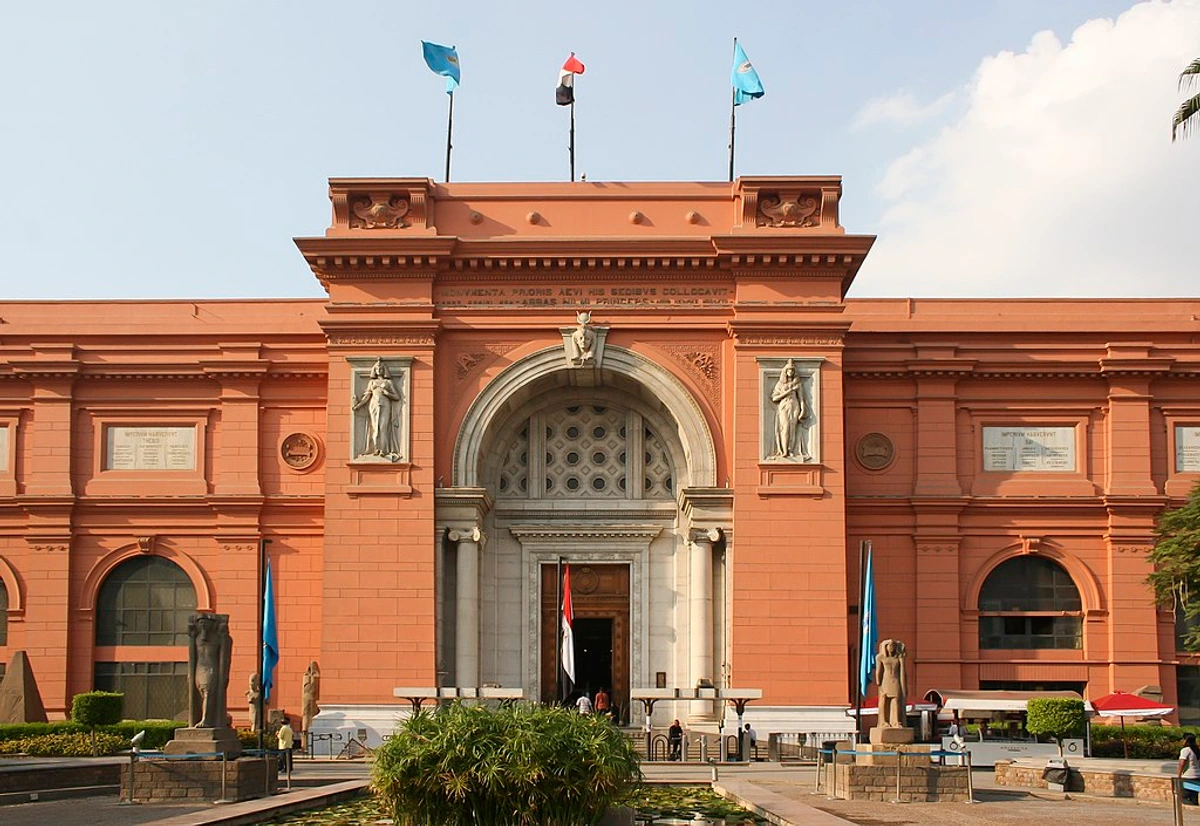
- Zeitz Museum of Contemporary Art Africa (Zeitz MOCAA) (Cape Town, South Africa): Housed in a stunningly repurposed grain silo, Zeitz MOCAA is the largest museum of contemporary art from Africa and its diaspora. It's a powerful and essential institution showcasing the vibrant and diverse artistic voices from the continent today. The architecture alone is breathtaking, and the art inside is often challenging, thought-provoking, and deeply moving – a truly inspiring space that makes me reflect on the global nature of contemporary art and the importance of diverse perspectives. Seeing how artists here engage with history, identity, and contemporary issues using a wide range of mediums is incredibly insightful and pushes me to consider the narratives in my own work and the power of art as a tool for social commentary and cultural expression. It's a must-visit for anyone interested in the cutting edge and seeing how artists are responding to the world right now. I remember seeing an installation here that used everyday found objects to tell a powerful story about migration; it completely shifted my perspective on what materials could be used in art and how they could carry meaning. It was both simple and incredibly profound.

- National Museum of Mali (Bamako, Mali): This museum holds significant archaeological and anthropological collections, but is particularly renowned for its collection of traditional Malian textiles, masks, and sculptures, offering deep insights into the region's rich artistic heritage and craftsmanship. Exploring these traditional forms reveals different approaches to abstraction, symbolism, and material use that can be incredibly inspiring. The intricate patterns and forms in Malian textiles, for instance, offer a completely different visual language to explore, demonstrating the beauty and complexity found in traditional crafts and their connection to cultural identity. It's a powerful reminder that art takes countless forms and that deep artistic knowledge exists outside the Western canon.
The Americas (Beyond North America): Rich Histories and Modern Expressions
Crossing back to the Americas, but looking south, Latin America is home to incredible artistic traditions, from ancient civilizations to vibrant modern and contemporary movements. Its galleries reflect a complex history and a dynamic present, showcasing the fusion of indigenous legacies, colonial influences, and modern innovation. Visiting these institutions offers a chance to explore unique artistic dialogues and the powerful ways artists engage with identity, history, and social change. It's a region where the past and present are in constant conversation, and artists are often at the forefront of that dialogue.
- National Museum of Anthropology (Mexico City, Mexico): While primarily an anthropology museum, its vast collection of pre-Hispanic art and artifacts is unparalleled. It offers a profound look at the artistic achievements of civilizations like the Aztec and Maya, showcasing intricate sculptures, ceramics, and metalwork that are undeniably powerful works of art. Seeing the scale and detail of these ancient pieces makes you appreciate the long lineage of artists on this continent and the sophisticated visual languages they developed. The bold forms and symbolic complexity of Aztec sculpture, for example, are a powerful reminder of art's role in culture and belief systems, and the incredible skill achieved with limited technology. It makes my own tools feel incredibly advanced! Studying their use of form and symbolism can offer deep insights into conveying meaning visually.

- Museu de Arte de São Paulo (MASP) (São Paulo, Brazil): Known for its distinctive modernist architecture (designed by Lina Bo Bardi) and its diverse collection spanning European masters, Brazilian art, and photography. The unique glass easels used to display paintings create a floating effect, making the collection feel incredibly accessible and modern. It's a vital institution for understanding Latin American art, and the building itself is a bold artistic statement that influences how you view the art within. The collection offers a fantastic overview of Brazilian modernism and contemporary art, highlighting artists who engaged with both local themes and international movements. I'm always fascinated by how the display method at MASP, with paintings seemingly suspended in space, changes the way I interact with the work, making me think about presentation in my own studio. It's a simple idea with a powerful impact on the viewer's experience. Studying Brazilian modernists can also offer insights into how artists adapt global movements to local contexts.

- National Gallery of Canada (Ottawa, Canada): While technically North America, it offers a distinct perspective with significant collections of Canadian art (including Indigenous art), European masters, and contemporary works. Its architecture, including the Great Hall with its view of Parliament Hill, is also notable. The focus on Indigenous art provides crucial insights into the diverse artistic traditions of the land, showcasing a deep connection to nature, spirituality, and storytelling that offers a powerful counterpoint to Western traditions and expands the definition of what constitutes 'art'. It's a collection that reminds you of the deep roots of creativity in the land itself and offers profound lessons in using art to convey cultural narratives and spiritual beliefs.
Oceania: Indigenous Art and Contemporary Perspectives
Heading down under, Australia and the Pacific Islands have rich and ancient artistic traditions, alongside dynamic contemporary scenes. Their galleries showcase unique connections to land, culture, and history, often reflecting a deep spiritual relationship with the environment and ancestral stories. Exploring these collections offers a chance to engage with artistic practices deeply rooted in place and tradition, providing a refreshing contrast to globalized art trends. It's art that speaks of the land and its history, often using materials and techniques tied directly to the environment.
- Art Gallery of New South Wales (Sydney, Australia): Sydney's premier art museum houses significant collections of Australian art (including a strong focus on Indigenous Australian art), Asian art, and European masters. It offers a crucial window into the unique artistic landscape of Australia and its place in the wider world. The vibrant colours, intricate patterns, and deep storytelling in Indigenous Australian art are particularly captivating and offer a completely different way of seeing and representing the world – a profound source of inspiration. The use of dot painting or cross-hatching, for example, is a technical and conceptual marvel that speaks to a long and complex history. It makes you rethink what a 'canvas' can be and how abstract forms can carry profound meaning and connection to place.

- National Gallery of Victoria (Melbourne, Australia): Australia's oldest and most visited gallery, with a diverse collection spanning international and Australian art. It's a key institution for understanding art in the Southern Hemisphere, including significant collections of Indigenous Australian art. Like its Sydney counterpart, it highlights the depth and continuity of art on this continent and its engagement with global movements, offering a comprehensive look at Australian artistic identity from traditional to contemporary forms. It's a comprehensive look at a unique artistic voice and how artists engage with both local identity and global trends.
Middle East: Ancient Crossroads and Modern Hubs
Finally, we turn to the Middle East, a region that has been a crossroads of cultures and artistic exchange for millennia, and today it's home to burgeoning contemporary art scenes. Its institutions reflect this rich history and forward-looking energy, showcasing both the enduring beauty of Islamic art and the dynamic expressions of contemporary artists engaging with regional and global themes. Visiting these galleries offers insights into artistic traditions shaped by unique cultural, religious, and historical contexts. It's a region where ancient patterns meet modern expressions, and calligraphy and geometry often take center stage.
- Museum of Islamic Art (Doha, Qatar): Designed by I.M. Pei (who also designed the East Building of the National Gallery in D.C.!), this museum houses one of the world's most comprehensive collections of Islamic art spanning 1,400 years. The architecture is stunning, and the collection offers a deep dive into the incredible craftsmanship, geometry, and beauty of Islamic artistic traditions from across the globe. It's a place that makes you appreciate the intricate detail and patterns that have influenced artists for centuries, and the profound connection between art, mathematics, and spirituality. The complex geometric patterns and calligraphy are a visual language of incredible sophistication that makes me think about structure and form in a new way, and the power of abstract art to convey deep meaning. It's a different kind of abstraction than I'm used to, and utterly captivating, offering lessons in precision, repetition, and the power of line.

- Guggenheim Abu Dhabi (UAE - Under Development): While not yet open, the planned Guggenheim Abu Dhabi, designed by Frank Gehry, is set to be a major institution for modern and contemporary art, with a focus on art from the Middle East, North Africa, and South Asia. Its future presence signals the growing importance of the region in the global art world and its commitment to contemporary artistic dialogue, promising to be a significant hub for showcasing diverse artistic voices. It's exciting to see new major institutions emerging on the global stage, reflecting the ever-expanding map of the art world.
These examples highlight that incredible art experiences are truly global. Don't limit yourself to the usual suspects! Each region offers a unique lens through which to view human creativity, and exploring them can profoundly impact your own artistic perspective. Where will your art journey take you next? Perhaps a deep dive into the symbolism of ancient artifacts, or maybe a trip to see cutting-edge contemporary installations? The possibilities are endless.
Beyond the Walls: Education, Research, and Community for Artists
Famous galleries aren't just places to passively view art; they are vibrant cultural ecosystems that offer much more, especially for artists. Many have extensive education departments offering talks, workshops, and courses – invaluable opportunities to learn new techniques, understand art history in depth, or engage with curators and fellow artists. Think workshops on historical painting techniques, lectures on contemporary art theory, or even practical sessions on portfolio building. Their research libraries and archives are treasure troves for anyone wanting to delve deeper into specific artists, movements, or historical contexts – like having access to the masters' sketchbooks and letters (metaphorically speaking!). Furthermore, attending exhibition openings, member events, or public programs can be great ways to connect with the local art community, network with other artists and professionals, and feel more integrated into the art world. It's where you might meet potential collaborators, mentors, or even collectors. Some major institutions even offer artist residency programs, providing space and resources for artists to create work within the museum environment – imagine having a masterpiece just down the hall for inspiration! These institutions can be resources for lifelong learning and community building, not just tourist destinations. They're like giant, slightly intimidating, but ultimately welcoming, community centers for art lovers, offering resources that can directly impact your practice and career.
Another often-overlooked aspect is the conservation department. While not always publicly visible, seeing conserved works or learning about the conservation process offers incredible insights into the materials and techniques artists used throughout history, and the challenges of ensuring art's longevity. It makes you think about the physical life of an artwork, something I definitely consider when choosing materials for my own pieces. Understanding how different pigments fade or how certain supports degrade can influence your material choices and archival practices, ensuring your own work stands the test of time (or at least has a fighting chance!). Plus, conservation work can sometimes reveal details about the artist's intent or the original appearance of a piece that have been lost over time or obscured by previous restorations, offering a unique glimpse into the creative process and the artwork's history.
Beyond the traditional museum structure, consider exploring single-artist museums (like the Van Gogh Museum in Amsterdam or the Rodin Museum in Paris) or major sculpture parks (like Storm King Art Center in New York or the Hakone Open-Air Museum in Japan). Single-artist museums offer an incredibly focused deep dive into one artist's life and work, allowing you to trace their evolution, study their techniques in detail, and understand their vision intimately. Sculpture parks, on the other hand, offer a unique experience of art in dialogue with nature and architecture, challenging traditional notions of the gallery space and offering inspiration for scale, material, and site-specific work. These specialized institutions provide different but equally valuable perspectives for an artist seeking inspiration.
The Complexities: Ethics and the Art World
While celebrating the treasures within famous galleries, it's also important to acknowledge the complexities and sometimes controversial histories associated with them. Issues like the provenance of objects (how they were acquired), the repatriation of cultural artifacts to their countries of origin, or the ethical considerations around funding and sponsorship are ongoing discussions in the art world. For instance, the ongoing debate surrounding the Elgin Marbles at the British Museum, or cases involving Nazi-looted art found in major collections, highlight the complex historical legacies and ethical responsibilities institutions face. While these topics might seem distant from the act of creating art, they are part of the larger ecosystem and reflect the power dynamics and historical legacies that shape institutions. Being aware of these discussions adds another layer of understanding to the context in which art is collected, displayed, and valued. As an artist, I sometimes grapple with these complexities myself – how does the history of an object or the source of funding for an exhibition influence how I view the art, or even my own place within the art world? It's a reminder that the art world, like art itself, is rarely simple, and often carries the weight of history, both good and bad. Understanding these issues is important because they shape the very institutions that might one day house your work, influencing narratives, public perception, and even the market value of art.
Tips for Your Artistic Gallery Visit
Visiting a famous gallery isn't just about seeing the art; it's about experiencing it, especially as an artist. Here are some tips to make your visit count, specifically tailored for fueling your creative practice (and maybe avoiding that existential art crisis I mentioned earlier). These are the things I try to remember, though sometimes the sheer beauty or scale makes my brain just... stop.
Planning Your Visit
- Check Temporary Exhibitions FIRST: Seriously. While the permanent collection is the backbone, temporary exhibitions are often the main draw and might require separate planning or timed tickets. Check the gallery's website before you do anything else to see what's on and if it aligns with your interests. Sometimes, a single temporary show is worth the trip alone! It's like checking the concert schedule before visiting a city – you might find your favorite band is playing.
- Book Ahead: Seriously. Especially for the big names, booking tickets online saves you hours in queues. It's a small step that makes a huge difference. Nobody wants to spend their precious art time standing in line, feeling like a sardine. Plus, some popular temporary exhibitions require timed entry. Don't be that person stuck outside. Your feet will thank you.
- Check the Floor Plan Online: These places are labyrinths! Look up the floor plan before you go. Identify the wings or specific rooms you want to prioritize. This saves wandering aimlessly (unless that's your jam, which is also valid!). Also, check for any temporary closures or renovations – nothing worse than planning your whole visit around a wing that's shut! Having a rough plan gives you a sense of control in an overwhelming space, like having a map for a treasure hunt.
- Don't Try to See Everything: You can't. You'll just end up tired and cranky. Pick a few wings, artists, or periods that genuinely interest you. Quality over quantity. It's better to deeply engage with a few pieces than sprint past hundreds. I usually pick 2-3 must-sees and then allow myself to wander, knowing I can always come back. It's okay to leave some things for a future visit. Art fatigue is real – it's like your brain gets full! Trying to see everything is like trying to drink from a fire hose.
- Go Early or Late: Avoid peak times (usually midday) if possible. The first hour or the last couple of hours often offer a slightly calmer experience. Weekdays are generally better than weekends. Getting there right when they open can feel like you have the place to yourself for a glorious few minutes, a rare moment of quiet contemplation.
- Consider the Time of Year: Visiting during peak tourist season can mean larger crowds. If possible, consider visiting during the shoulder season or off-season for a potentially more relaxed experience. Check the gallery's website for typical busy periods. Sometimes a little planning goes a long way in avoiding the sardine effect.
- Utilize Cloakrooms: If you're visiting in cooler months, ditching your heavy coat and bag at the cloakroom is a game-changer. Trust me, lugging a backpack through crowded galleries is no fun. Check their policy on bag size beforehand. Your shoulders will thank you. Plus, you'll feel lighter and more free to move around.
- Check for Free Admission Days/Times: Many museums offer free admission on certain days or evenings. Check their website to see if you can time your visit to save some money. Every little bit helps! It's a great way to make art accessible to everyone, including the perpetually broke artist (speaking from experience!).
- Check Accessibility: If you have mobility concerns or other needs, check the gallery's website for accessibility information beforehand. Most major institutions are well-equipped, but it's always good to be prepared to ensure a comfortable visit. Art should be for everyone.
- Know the Photo Policy: Policies vary wildly. Some allow photos (no flash!), some don't allow photos of specific works, and some forbid them entirely. Check ahead to avoid disappointment (or getting yelled at by a stern-looking guard). My personal rule? If in doubt, don't. A mental image is often better anyway, and you can always find high-quality reproductions online later. Plus, sometimes the act of not taking a photo forces you to look more closely, to really see rather than just document.
While You're There
- Bring a Small Sketchbook and Pencil: You won't be able to set up an easel, but a small notebook is invaluable. Jot down observations, sketch details that catch your eye (a hand gesture, a drapery fold, a color combination), or simply write down the names of artists and works that resonate. This isn't about creating finished pieces, but about active looking and capturing fleeting ideas. It's like having a conversation with the art on your own terms, training your eye to see form, line, and composition in action. It's your personal visual diary of the experience.
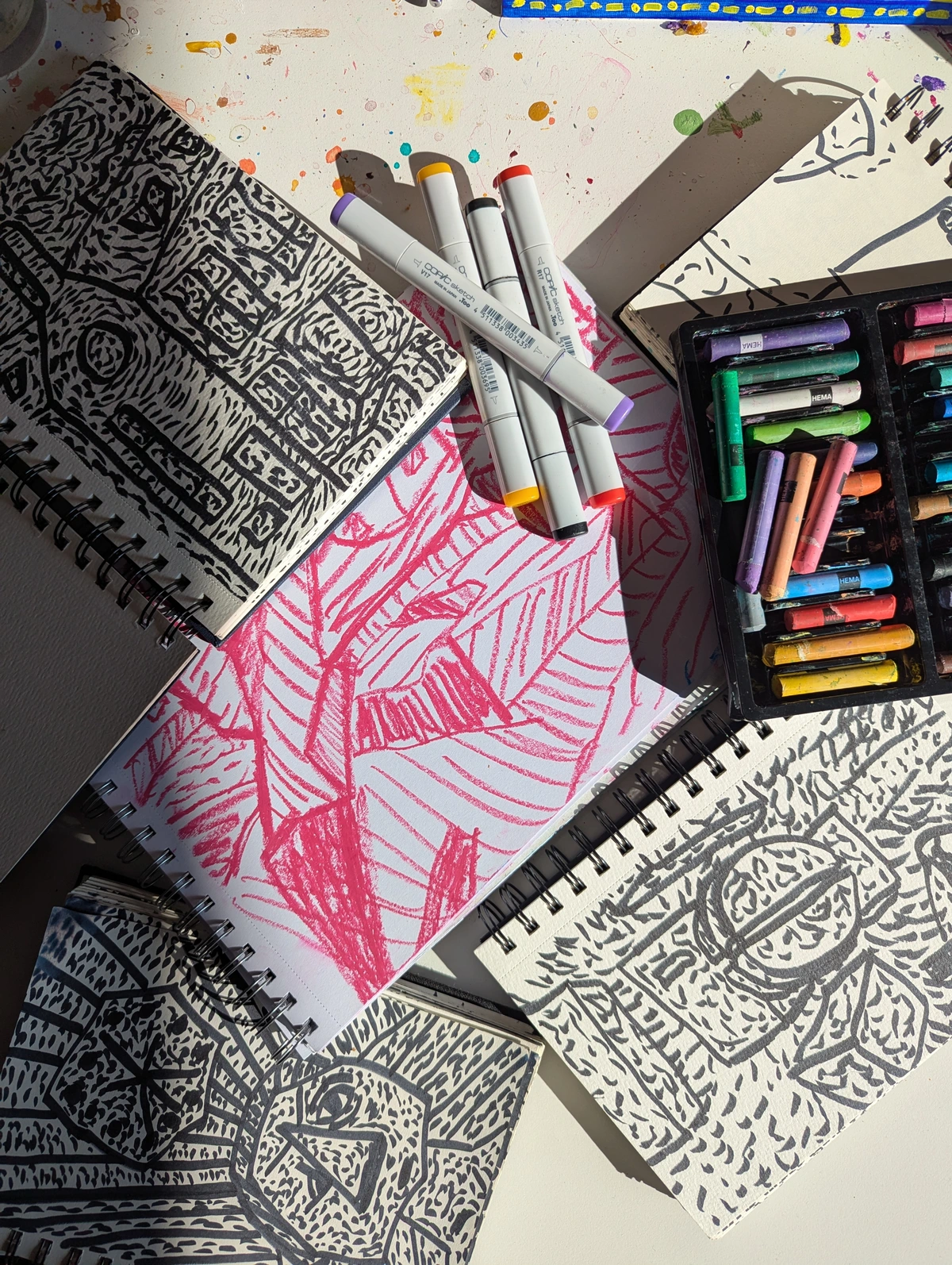
- Focus on Specific Elements: Instead of trying to absorb everything, pick a focus for a section or even a single artwork. How did the artist use color? What about composition? Look at brushwork, texture, the play of light and shadow (that chiaroscuro we talked about!). Analyzing these technical aspects can be incredibly insightful for your own work. How did they achieve that effect? What choices did they make, and why? This kind of focused observation is a masterclass in itself. It's like getting a private lesson from a master, just by looking closely at the evidence they left behind.
- Observe the Light: Pay attention to how the gallery lighting interacts with the art. Does it highlight texture? Does it change the perceived color? How does natural light (if present) affect the viewing experience? Also, pay attention to how light is depicted within the artwork itself – the dramatic chiaroscuro of a Rembrandt, the dappled light of an Impressionist scene. This can inform how you think about lighting your own studio, displaying your finished pieces, or even how you approach light in your own compositions. Light is a powerful tool, both in the art and in the space, and observing it critically can open up new possibilities in your own work.
- Pay Attention to Materials: As an artist, the 'how' is often as fascinating as the 'what'. Look closely at the materials used. Is it thick impasto oil paint, delicate watercolor washes, layered collage, or perhaps something entirely unexpected? Understanding the artist's material choices can offer practical insights and spark ideas for your own work. How did they achieve that texture? What kind of surface are they working on? Sometimes, if permitted, look at the backs of sculptures or installations to see the armature or construction methods – a peek behind the curtain that reveals the practical side of making. It demystifies the process and makes the art feel more real, reminding you that even the most ethereal piece started with physical stuff.
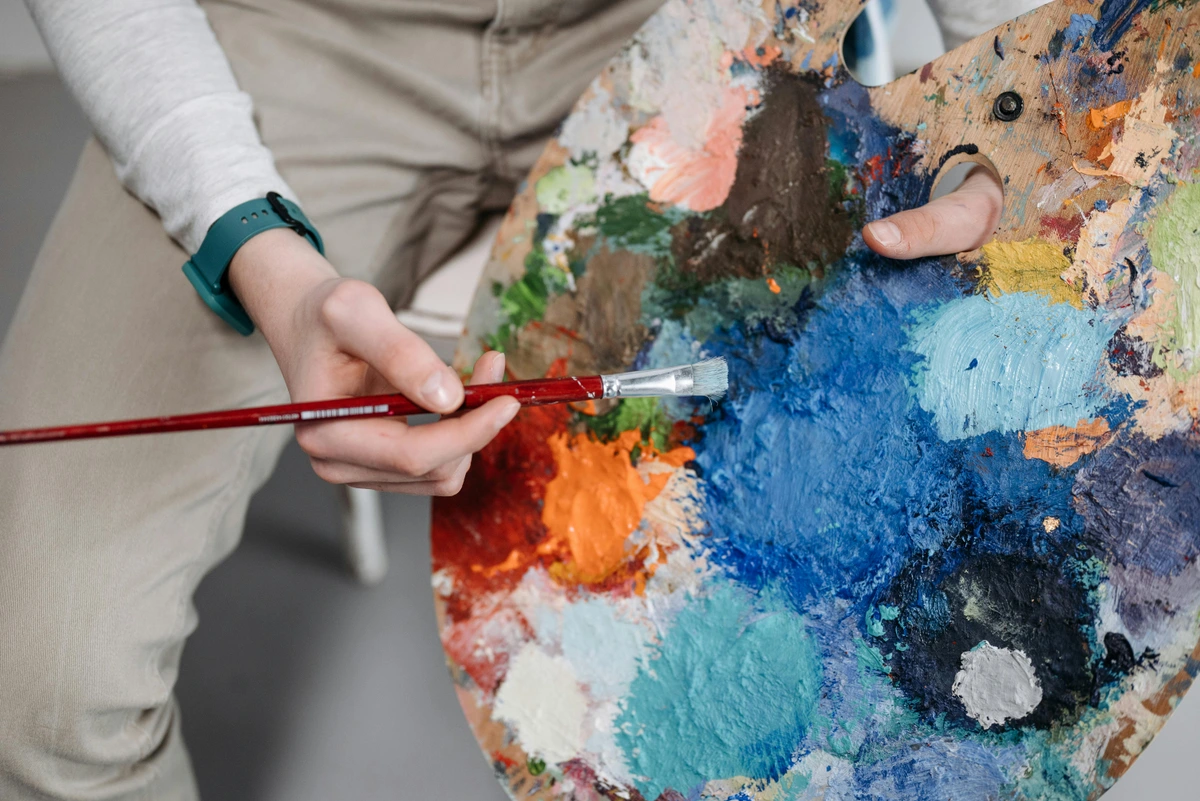
- Look for Signs of Process: Sometimes, if you look closely, you can see hints of the artist's working process – faint underdrawings, changes in composition (pentimenti – visible traces of earlier painting beneath a layer or layers of paint on a canvas), or the distinct directionality of brushstrokes. These glimpses into the 'making' can be incredibly revealing and inspiring, reminding you that even masterpieces started with a blank surface and a series of decisions, revisions, and happy accidents. It humanizes the masters and makes their achievements feel more attainable. It's like seeing the ghost of the artist's hand still at work, a reminder that art is a process, not just a finished product.
- Pay Attention to Framing and Display: The frame isn't just decoration; it's part of the presentation. Is it ornate and historical, or sleek and modern? How does the frame interact with the artwork? Similarly, consider how sculptures are pedestaled or installations are spaced. These curatorial choices influence how you perceive the art and can offer ideas for displaying your own work, whether in a gallery or at home art at home. The display is part of the story, guiding the viewer's eye and setting the mood. It's like the stage setting for the performance of the art.
- Observe Scale: Reproductions in books or online can never truly convey the scale of a work. Standing before a massive canvas or a monumental sculpture is a completely different experience. Pay attention to how the size of the artwork affects its impact, how it dominates or interacts with the space, and how it makes you feel in its presence. This is a crucial lesson for understanding the physical presence and power of art. Does it overwhelm you? Draw you in? Make you feel small? These are all deliberate choices by the artist. It's a physical dialogue between you, the art, and the space, and it's something you can only truly understand in person.
- Observe the Curation: Look beyond individual pieces to see how the exhibition is put together. How are works grouped? What dialogue is created between pieces in the same room or across rooms? How does the wall text guide your understanding? Observing the curator's choices is a masterclass in visual storytelling and presentation, offering practical lessons for anyone planning their own exhibitions, online displays, or even just arranging art in their home. It's like reading the editor's notes on a great novel, revealing the structure and intent behind the presentation.
- Find a Quiet Spot: Large galleries can be overwhelming. Seek out quieter corners, perhaps in less famous wings or during off-peak hours. Sometimes the most profound connection happens when you can sit with a piece without the pressure of crowds, allowing yourself time to simply be with the art and let it speak to you. It's okay to hide from the crowds for a bit; the art isn't going anywhere. These quiet moments are often where the real inspiration hits, where the whispers across time become clearer, and you can truly absorb what you're seeing without distraction.
- Observe Other Visitors: This might sound odd, but watching how other people interact with the art can be surprisingly insightful, or sometimes just provide a moment of quiet amusement. See what draws their attention, how long they linger, or the expressions on their faces. It's a reminder that art is a shared human experience, even in a crowded room. Plus, it can be a good way to gauge which pieces are truly captivating. Or just enjoy the absurdity of everyone trying to get the same selfie with the Mona Lisa – it's a performance piece in itself! I once saw someone try to touch a sculpture and nearly gave a security guard a heart attack. Good times.
- Consider Guided Tours or Audio Guides: For specific sections or exhibitions, a guided tour or audio guide can provide invaluable context and insights you might otherwise miss. Don't feel you need one for the whole museum, but they can really enhance the experience for particular areas, offering historical background, technical details, or curatorial perspectives. It's like having a knowledgeable friend whispering secrets about the art in your ear, pointing out things you might have overlooked.
- Practice Basic Etiquette: This might seem obvious, but it's worth mentioning. Maintain a respectful distance from the art (don't touch!), be mindful of noise levels (keep conversations quiet, silence your phone), and be aware of others around you, especially in crowded areas. It's about creating a pleasant experience for everyone. Think of it as being a good guest in someone's very large, very precious home. And for the love of all that is holy, no flash photography if it's prohibited – you're not helping anyone, least of all the art. Your phone camera flash is not a substitute for professional lighting, trust me.
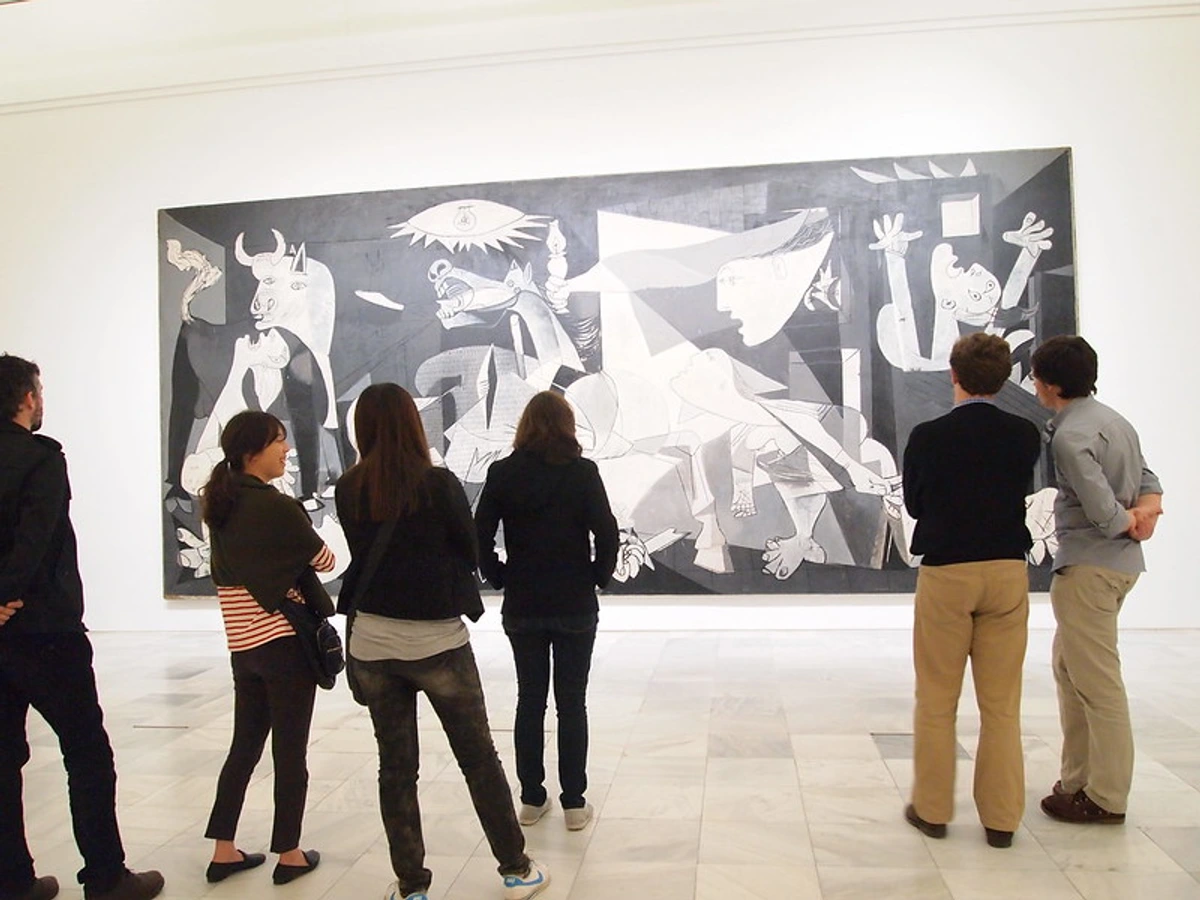
After Your Visit
- Visit the Museum Shop (Strategically): Beyond souvenirs, museum shops are treasure troves of art books, exhibition catalogs, and sometimes even quality art supplies. Browsing these can offer further inspiration, deeper dives into artists you discovered, or new materials to experiment with back in the studio. It's like taking a little piece of the gallery's knowledge home with you. And yes, the price of that coffee is sometimes its own form of abstract art! But seriously, the books can be invaluable resources.
- Refuel and Process: Don't underestimate the power of the museum cafe. It's not just for overpriced coffee and snacks; it's a vital space for processing everything you've seen. Find a seat, look through your sketchbook, or just let your mind wander. It's where the visual overload starts to settle and new ideas can begin to form. It's part of the experience, a moment to digest the visual feast. Sometimes the best ideas come when you're just sitting there, slightly dazed, with a lukewarm coffee.
- Look for Talks or Events: Check the gallery's schedule for artist talks, curator lectures, or exhibition openings. These events offer invaluable context, insights into the creative process, and opportunities to engage with the art world beyond passive viewing. Hearing an artist discuss their work or a curator explain their vision can be incredibly illuminating and offer practical advice or new perspectives.
- Reflect Afterward: After your visit, take some time to process what you saw. Journal about your favorite pieces, sketch something that inspired you, or just sit and think. This helps solidify the experience and connect it to your own life and creativity. What stories do these walls hold, and how do they echo in your own mind? How did the visit make you feel, and what ideas did it spark for your own art? This reflection is where the real learning and inspiration often happen, where the seeds planted during your visit start to sprout in your own creative soil.
Famous Galleries in the Digital Age
Can't travel? Or maybe you want to plan your visit meticulously? Many famous galleries now offer extensive online collections and virtual tours. While it's not quite the same as standing before a masterpiece, it's a fantastic way to explore art from anywhere in the world. It's also a great tool for planning a future visit or revisiting favourites. You can often zoom in on details you'd miss in person or explore collections not currently on display. The Metropolitan Museum of Art's Heilbrunn Timeline of Art History is a fantastic resource, and many institutions collaborate with platforms like Google Arts & Culture to offer high-resolution images and virtual walkthroughs. Some galleries are also building impressive digital media collections, showcasing video art, digital installations, and other screen-based works that are pushing the boundaries of contemporary art. It's a great way to get a preview or continue your art journey from home. I often use these online resources for research, especially when I'm looking for specific details of technique or composition in works I can't see in person right now. It's surprisingly immersive, though I still crave the real thing! Think of it as a valuable complement to the physical experience, not a replacement. It's like having a digital appendix to the main event.
A Final Thought: Finding Your Own Connection
Famous art galleries are more than just buildings full of old stuff. They are repositories of human creativity, emotion, and history. They can challenge us, inspire us, and connect us across time and cultures. Whether you're drawn to the grandeur of the Louvre or the focused intensity of a smaller contemporary gallery, the key is to approach them with curiosity and an open mind. Don't worry about "getting" everything immediately. Sometimes the most profound connections happen unexpectedly. It's okay if you don't love every single piece; art is subjective, and finding what resonates with you is the real goal. What speaks to your soul? What colours, forms, or stories make your heart sing? What techniques make you pause and wonder? These are the questions that matter.
For me, visiting galleries, big or small, fuels my own work. Seeing how others have wrestled with colour, form, and ideas pushes me forward. The way a Renaissance master built layers of paint, or how a contemporary artist uses unexpected materials – these observations feed directly into my process. It's part of the ongoing conversation that is art, a conversation I try to continue with the pieces I create and offer. Perhaps visiting these spaces will spark something in you too. Maybe it will even inspire you to start your own "Starting an Art Collection on a Budget)". Your art journey is unique, and these incredible institutions are just one part of it. Embrace the experience, learn from the masters (and the emerging artists!), and let it enrich your own creative path. The walls hold stories, but the real magic happens when those stories echo in your own mind and find their way into your hands, onto your canvas, or into whatever medium calls to you. Go forth and be inspired!
Frequently Asked Questions (FAQ)
Got questions? Here are some common ones I hear, hopefully with answers that help you navigate the world of famous galleries, from one art lover to another. (Though, honestly, some of this is covered above, but hey, FAQs are useful, right?)
Q1: What's the difference between an art gallery and an art museum? A: Traditionally, galleries focused on exhibiting and selling art (often contemporary), while museums focused on collecting, preserving, and displaying art (often historical) for public education. However, the lines are blurred today. Many large "galleries" like the National Gallery function as museums with permanent collections, and many "museums" host temporary exhibitions like galleries. The terms are often used interchangeably for major institutions. Commercial galleries, on the other hand, are primarily focused on selling art. For a deeper dive, check out "What is an Art Gallery?". It's a bit like the difference between a bookstore and a library, but for art!
Q2: Which is the most famous art gallery in the world? A: While subjective, the Louvre Museum in Paris is arguably the most famous globally, largely due to its iconic collection (including the Mona Lisa), historical significance, and immense visitor numbers. MoMA in New York and the Vatican Museums are also strong contenders. But "most famous" doesn't always mean "best" for your personal experience! Sometimes the quiet contemplation in a lesser-known spot is far more impactful than battling the crowds around a superstar painting. Fame is one thing, personal connection is another.
Q3: Are famous art galleries worth visiting despite the crowds? A: Generally, yes! While crowds can be challenging (navigating the Mona Lisa crowd is a sport!), seeing world-renowned masterpieces in person is a unique experience that reproductions can't capture. Planning your visit strategically (booking ahead, going off-peak, focusing on specific areas, using the floor plan!) can significantly mitigate the stress of crowds. Think of it as navigating a busy marketplace – challenging, but often incredibly rewarding if you go in with a plan (and maybe some patience!). The physical presence of the art makes a huge difference.
Q4: How long should I plan to spend at a famous art gallery? A: It varies greatly depending on the size of the gallery and your interest. For massive institutions like the Louvre or the Met, you could easily spend a full day and still not see everything. A minimum of 2-3 hours is often recommended to see the highlights without rushing. For smaller famous galleries, 1-2 hours might suffice. It's better to focus on enjoying what you see than trying to cover everything. Remember, art fatigue is real – listen to your brain and your feet! Don't feel guilty about needing a break or deciding you've seen enough for one day. It's not a race.
Q5: Can I find contemporary art in these famous historical galleries? A: Many large, historically focused galleries also have sections dedicated to or incorporating modern and contemporary art. The Louvre has contemporary interventions, the Met has a modern wing, and the National Gallery in London often hosts contemporary exhibitions. Institutions like Tate Modern or Centre Pompidou specialize in it. Check the gallery's collection focus before visiting if contemporary art is your main interest. You can also explore dedicated "Best Galleries for Modern Art)". The art world is constantly evolving, and even old institutions are finding ways to engage with the present.
Q6: What should I do if I feel overwhelmed in a large gallery? A: It's completely normal! Take a break – find a quiet bench, step outside for some air, or visit the museum cafe. Re-evaluate your plan; maybe focus on just one or two key pieces or sections for the rest of your visit. Don't feel pressured to see everything. Remember, it's about your experience, not a test. Give yourself permission to slow down or even leave and come back another day if possible. Your mental well-being is more important than ticking every box on a list. Sometimes stepping away and coming back with fresh eyes makes all the difference.
Q7: Are photos allowed in famous art galleries? A: It varies greatly by institution and even by specific artwork. Many allow photography for personal use (no flash!), but some works (especially temporary exhibitions or loaned pieces) may be restricted. Always check the gallery's website or look for signage. When in doubt, ask a staff member. Respect the rules – they're often there to protect the art or the visitor experience. And honestly, sometimes putting the phone away and just looking is the best way to connect. Your memory is a powerful camera too.
Q8: How do I choose which gallery to visit in a city? A: Consider your interests! Are you passionate about Old Masters, modern art, or contemporary work? Do you want to see iconic blockbusters or discover local artists? Check the collections online, look at temporary exhibitions, and read reviews. Sometimes focusing on a specific period or type of art can make the choice easier. And don't be afraid to visit a smaller, lesser-known gallery for a more intimate experience! Trust your gut and your interests – what kind of art makes your heart sing? What do you want to learn or experience?
Q9: What should I wear to a famous art gallery? A: Comfort is key! You'll likely be doing a lot of walking and standing. Wear comfortable shoes. Layers are also a good idea, as temperatures can vary between galleries or even within different sections of a large museum. There's no dress code, so just wear what makes you feel comfortable and allows you to enjoy the art without distraction. Nobody's judging your outfit, they're looking at the art (or maybe the Mona Lisa crowd). My personal uniform usually involves comfy sneakers and layers I can easily shed. Practicality over runway fashion, always.
Q10: Are famous galleries accessible for visitors with disabilities? A: Most major famous galleries are committed to accessibility and offer ramps, elevators, accessible restrooms, and sometimes even specialized tours or resources. It's always best to check the specific gallery's website or contact them in advance to confirm facilities and any specific services they offer. Planning ahead ensures a smoother and more enjoyable visit for everyone. Accessibility is crucial for making art available to all.
Q11: Can I bring food or drinks into a famous gallery? A: Generally, no food or drinks (other than bottled water with a cap) are allowed in the exhibition spaces to protect the art. Most large galleries have cafes or restaurants where you can take a break and refuel. Check the specific gallery's rules before you go. That museum cafe coffee break is often a highlight anyway! A moment to rest your feet and process.
Q12: Is it okay to visit a famous gallery with children? A: Absolutely! Many famous galleries have programs, resources, or specific wings designed for children and families. Look for family guides, activity sheets, or interactive exhibits. Keep the visit shorter, focus on a few key pieces, and make it fun! It's a wonderful way to introduce young minds to the world of art, even if it means spending more time looking at the architecture or a single colourful painting than trying to see everything. Start small and make it an adventure.
Q13: How much does it cost to visit a famous art gallery? A: Admission prices vary widely. Some major national galleries (like the National Gallery in London or the National Gallery of Art in D.C.) offer free general admission to their permanent collections, though temporary exhibitions may have a fee. Others, like the Louvre or MoMA, have significant entrance fees (often €15-€20 or more). Many offer discounted rates for students, seniors, or children, and some have free admission on specific days or evenings. Always check the gallery's official website for the most current pricing information before you plan your visit. It's an investment, but often a worthwhile one for the experience! And remember, there are plenty of free or low-cost options too.
Q14: What is gallery etiquette? A: Basic gallery etiquette includes not touching the artwork (even if there's no barrier), maintaining a quiet voice, silencing your phone, being mindful of personal space (especially in crowded areas), and not blocking the view of others for extended periods. It's about showing respect for the art, the space, and fellow visitors. Think of it as being a good guest in someone's very large, very precious home. Don't be that person.
Q15: Are museum memberships worth it? A: If you plan to visit a specific museum or a network of museums frequently (say, more than twice a year), a membership can definitely be worth the cost. Beyond free admission, benefits often include skipping ticket lines, discounts at the museum shop and cafe, invitations to member-only events or exhibition previews, and sometimes free admission to partner museums. It turns a single visit into a potential ongoing relationship with the institution and can be a great way to support the arts while getting perks. It's like becoming a VIP in the art world, but without needing a velvet rope.




